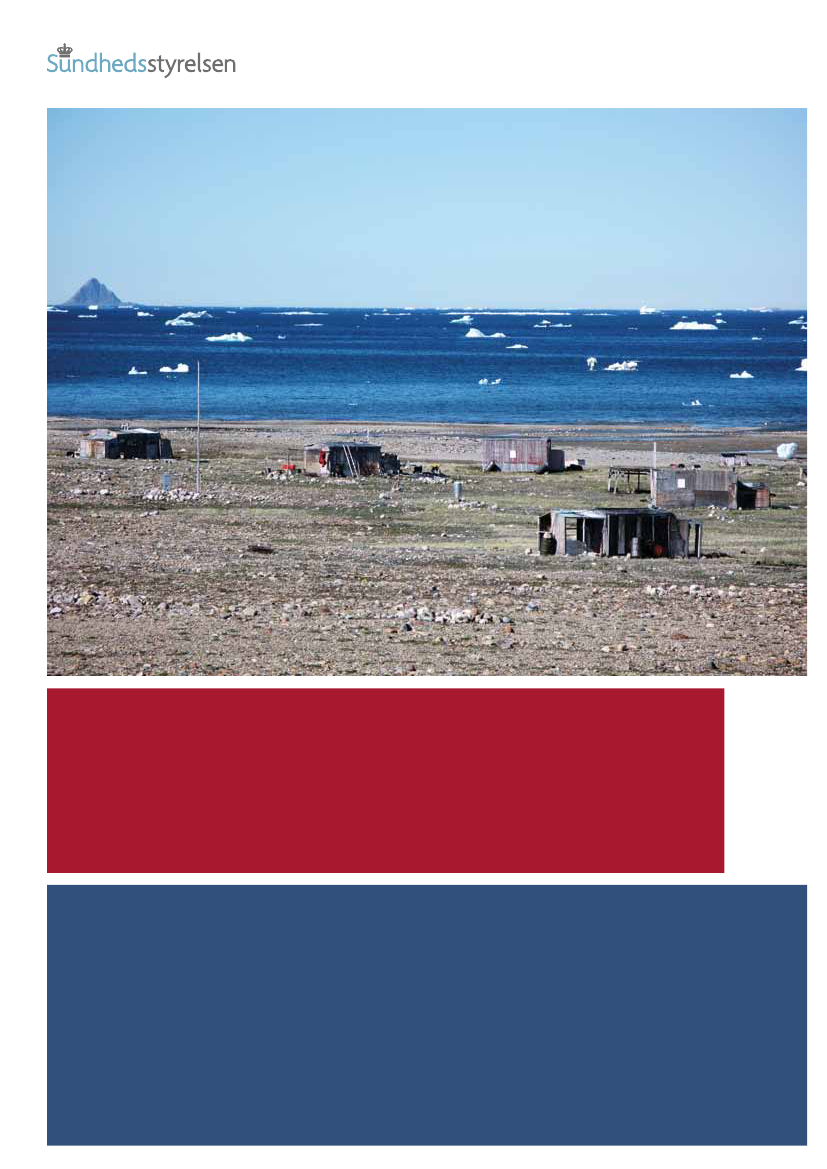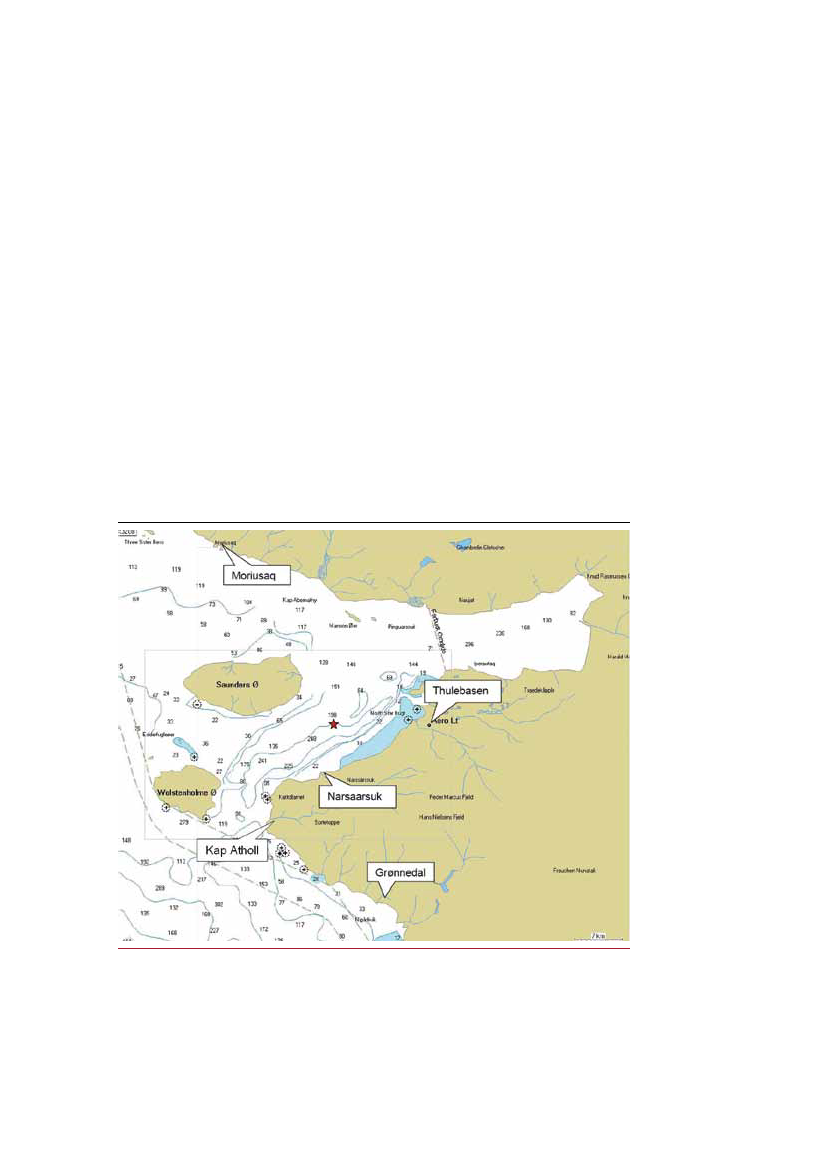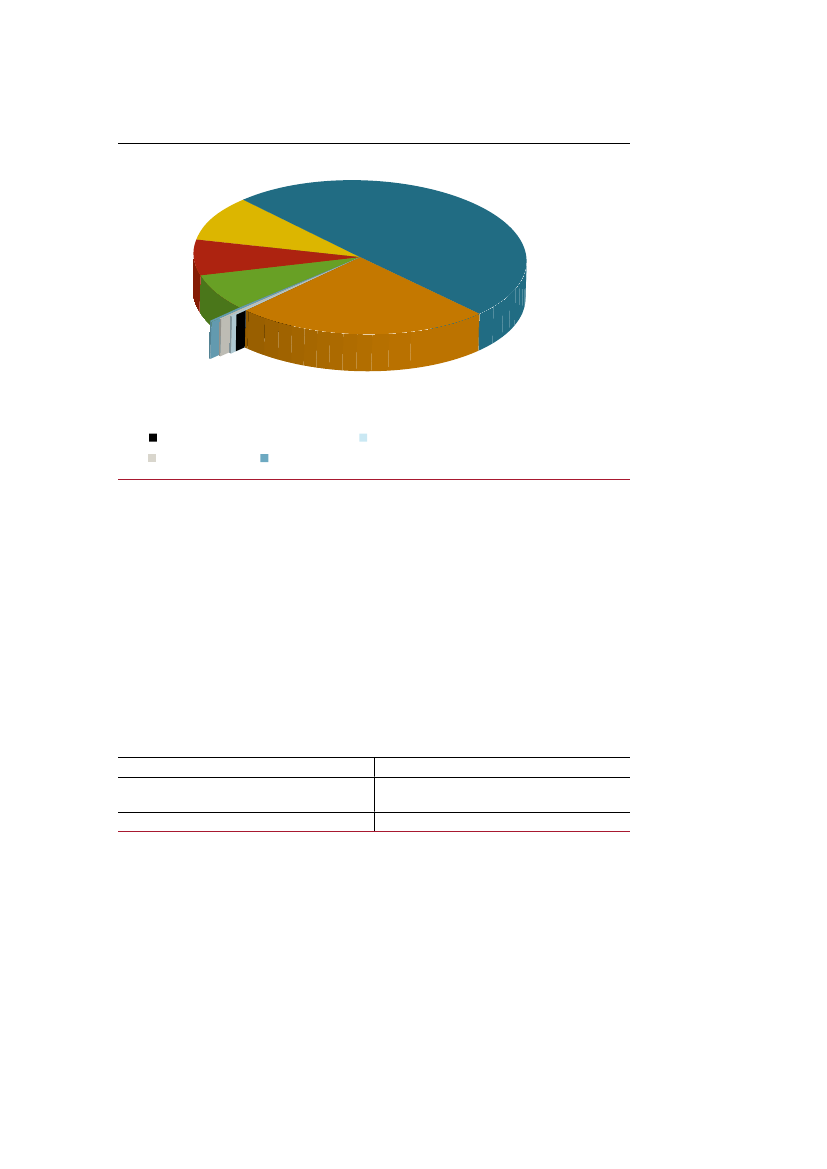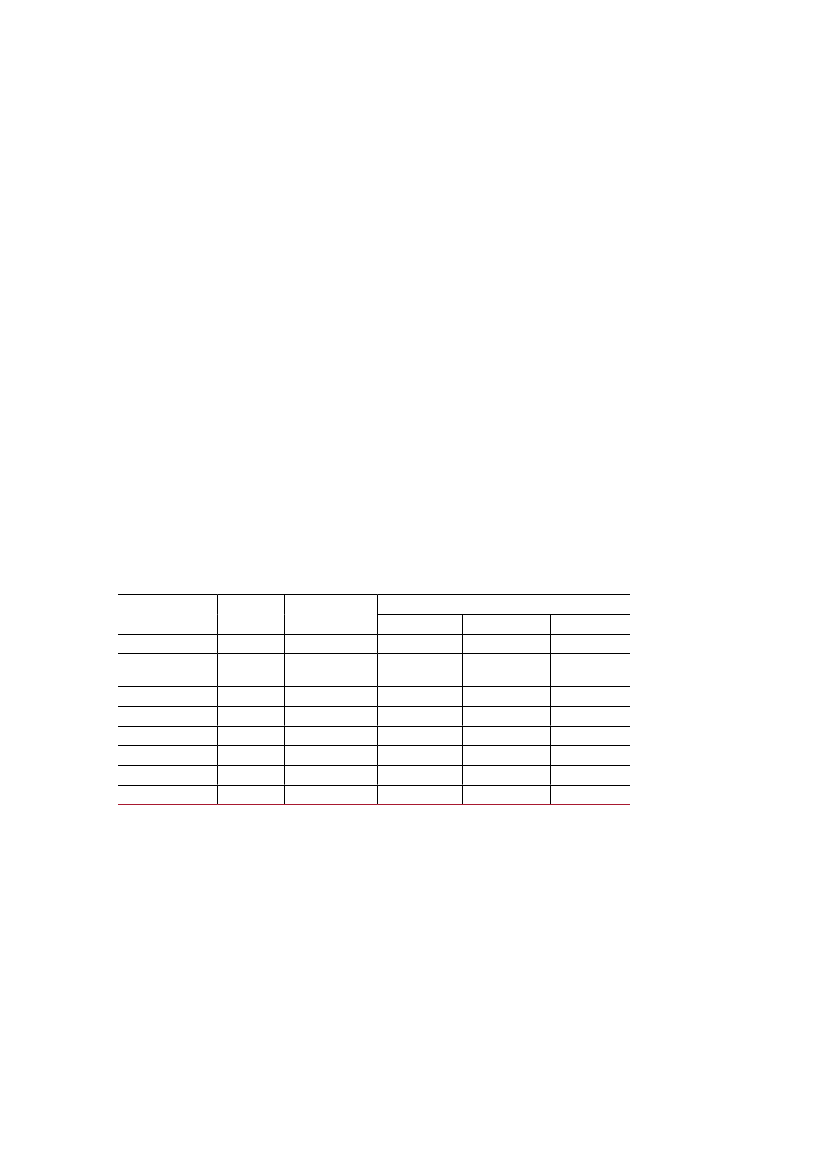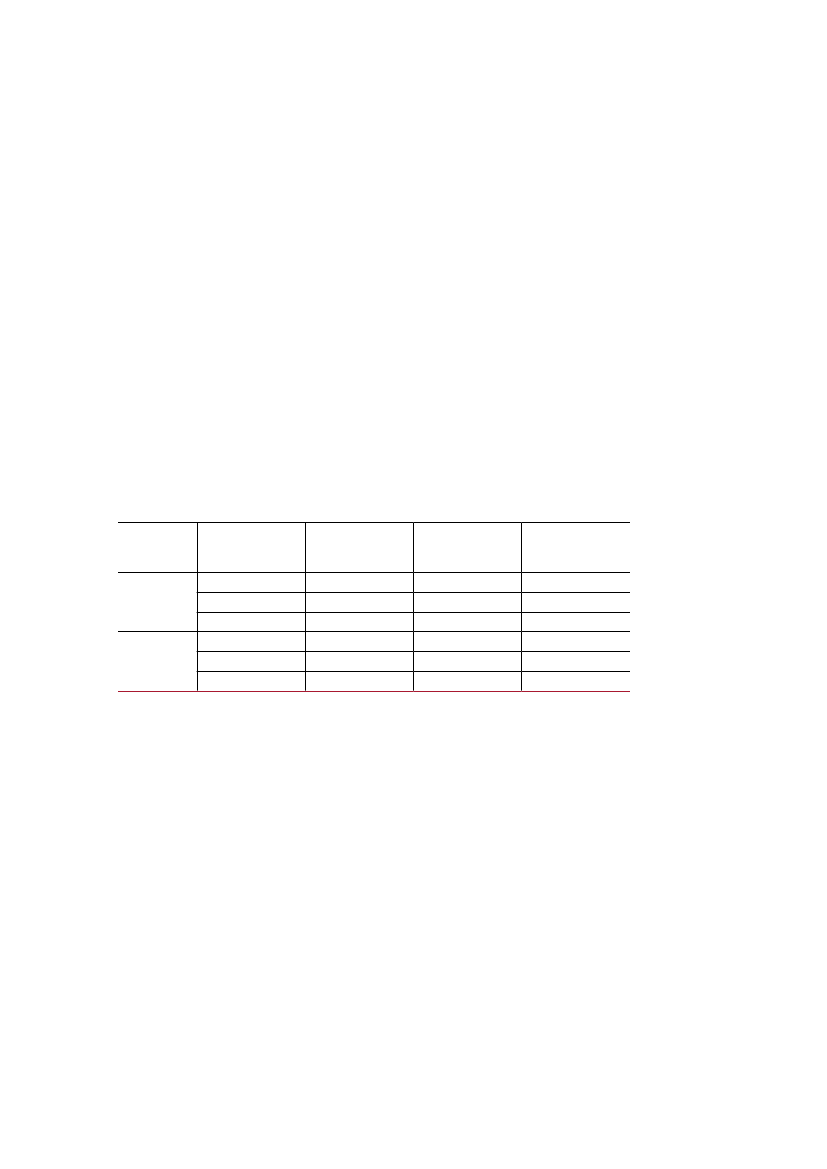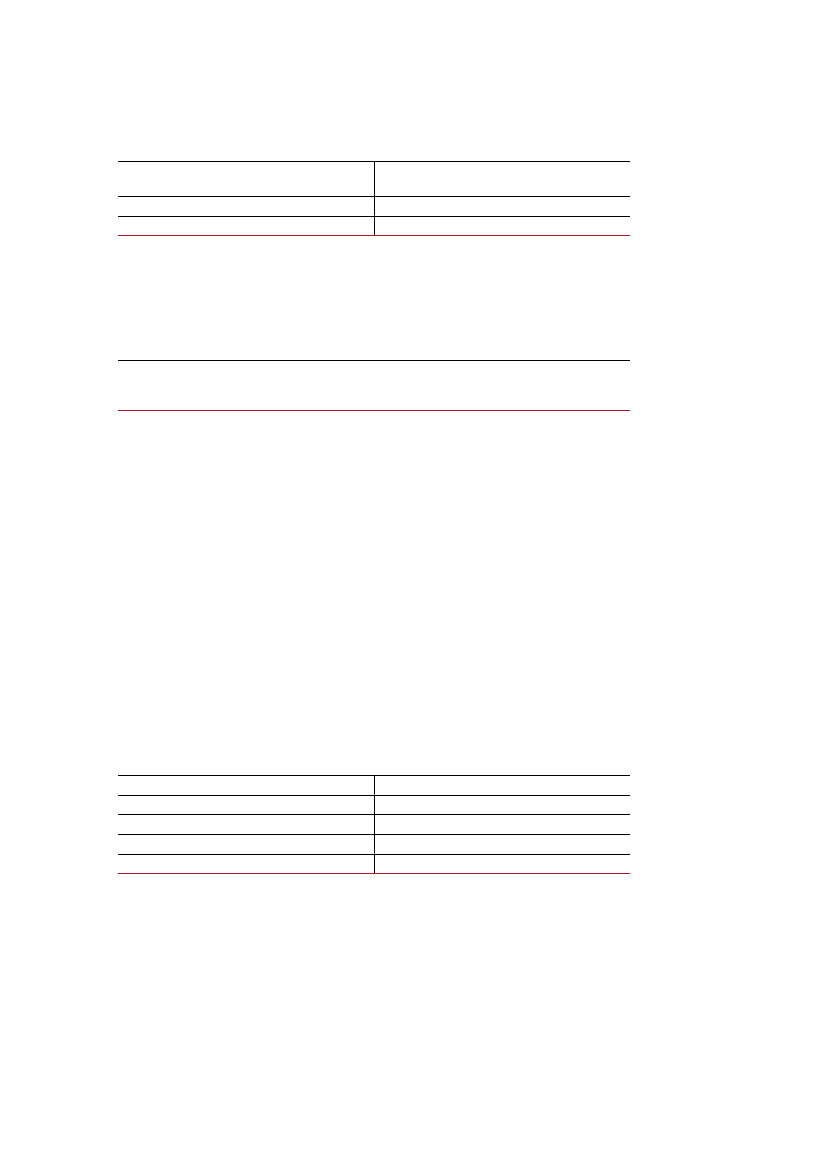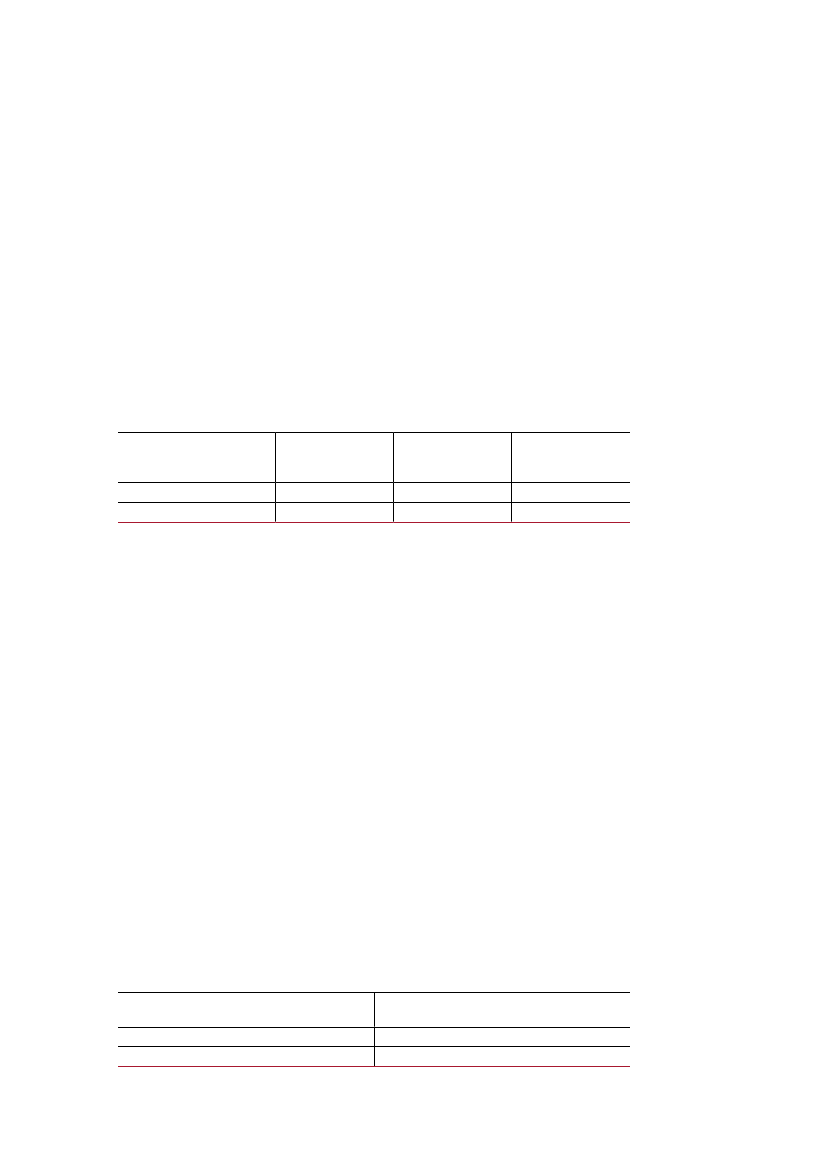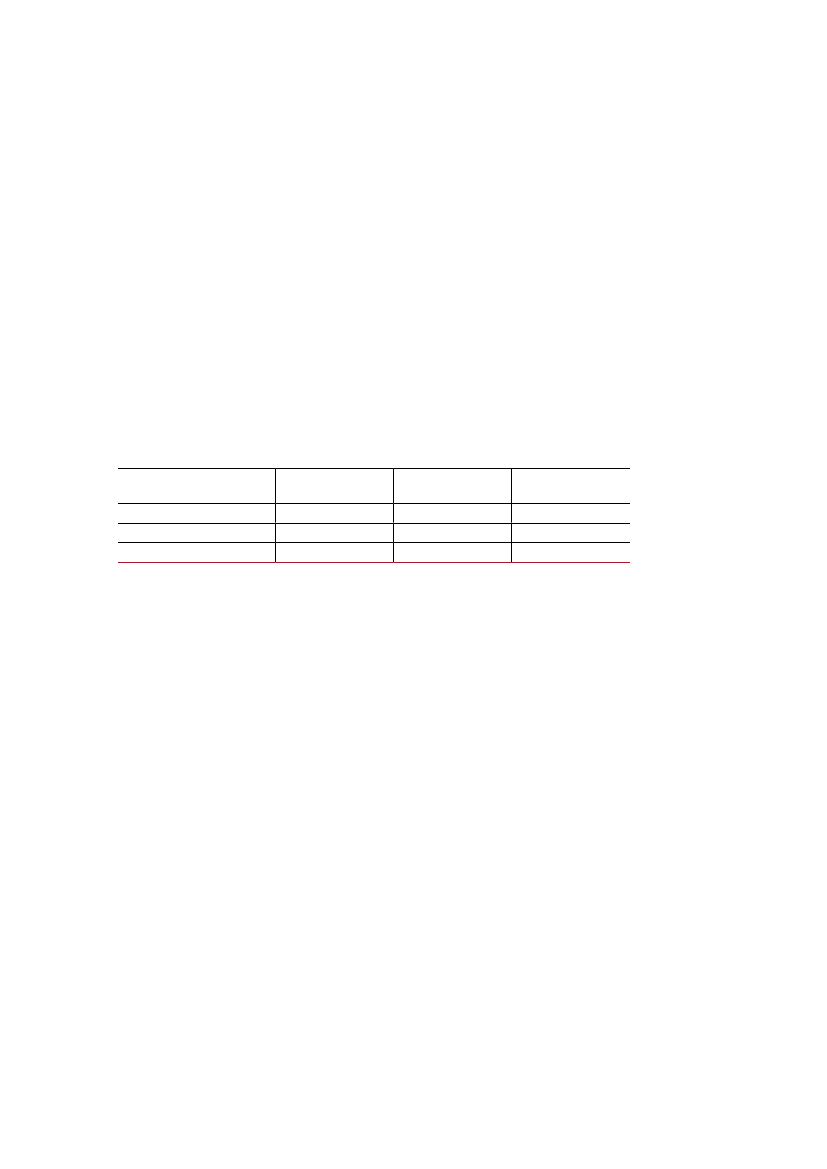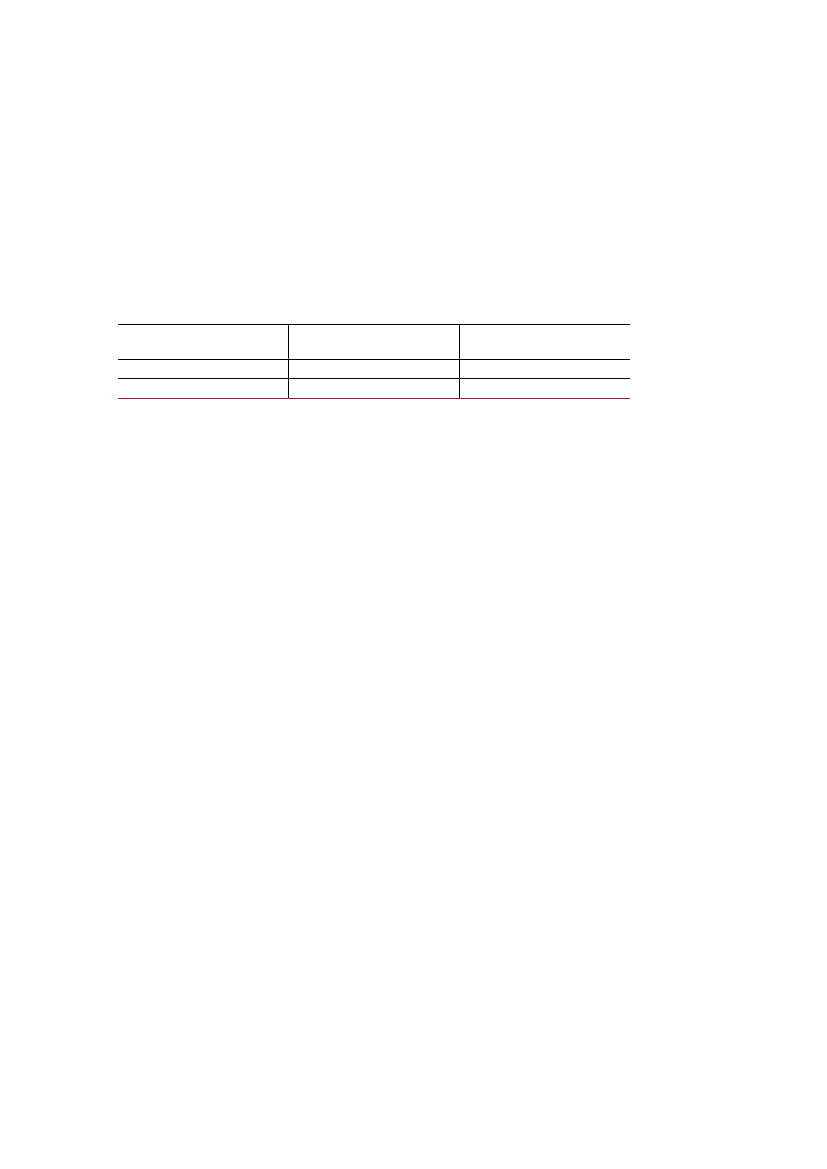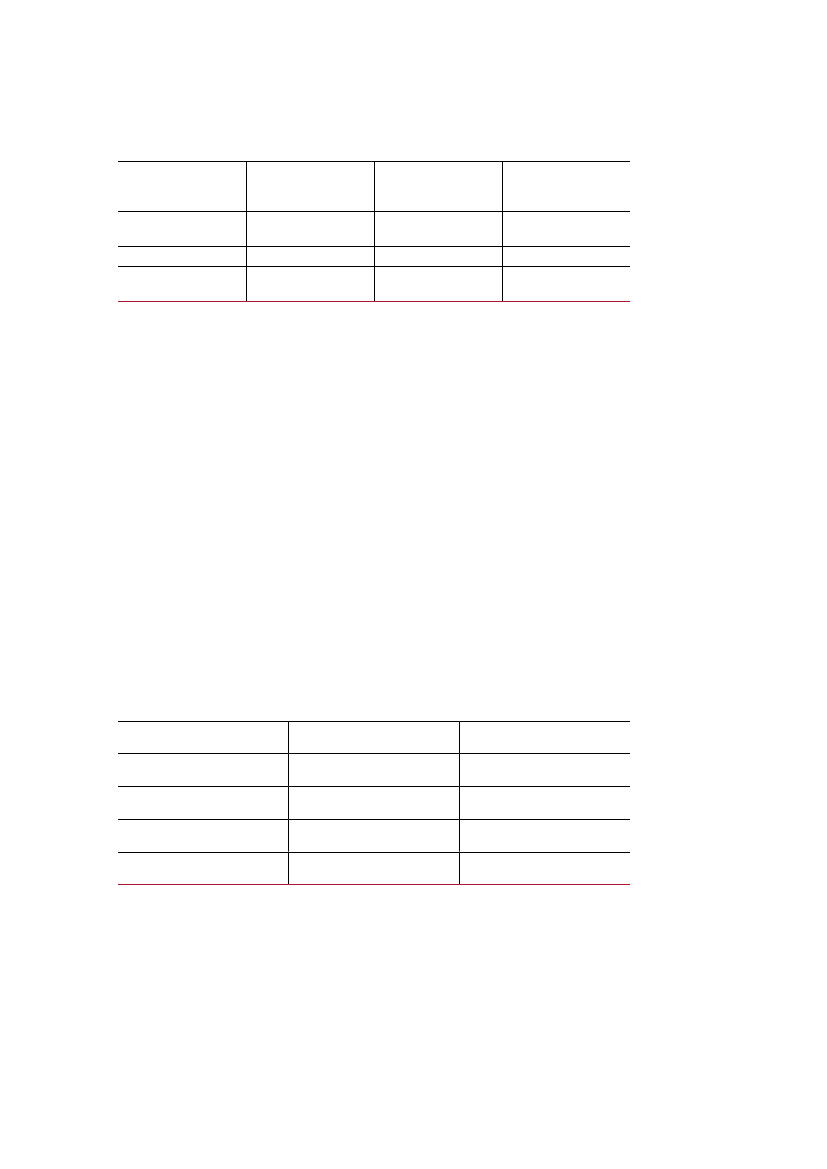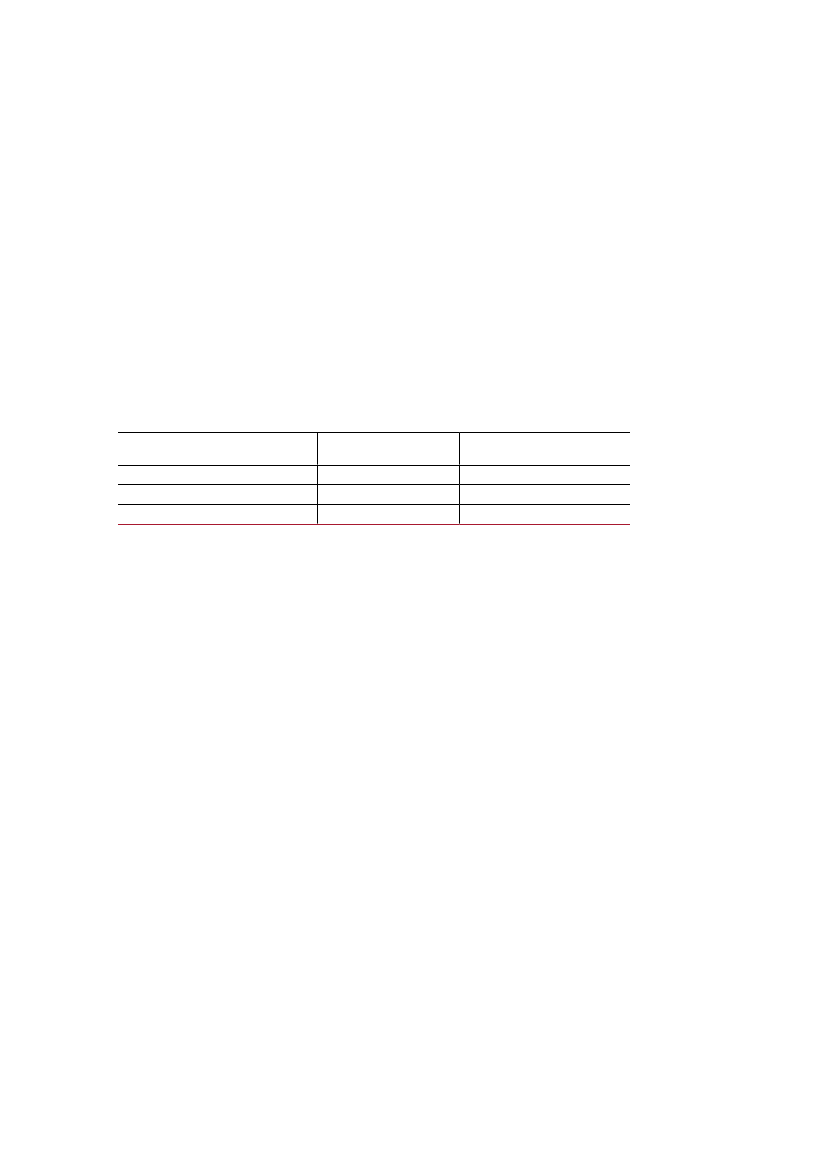Grønlandsudvalget 2011-12, Forsvarsudvalget 2011-12
GRU Alm.del Bilag 23, FOU Alm.del Bilag 171
Offentligt
SundhedsstyrelsenStatens Institut for Strålebeskyttelse
The Thule AccidenTAssessment of Radiation doses fromTerrestrial Radioactive contamination
2 0 11
The Thule Accident: Assessment of Radiation Doses from Terrestrial Radioactive Contamination� National Board of Health, 2011National Board of HealthIslands Brygge 672300 Copenhagen SDenmarkwww.sst.dkEdited by Chief Advisor Kaare Ulbak, National Institute of Radiation Protection, Knapholm 7, 2730Herlev, DenmarkKeywords: Greenland, Thule, plutonium, accident, contamination, radiation doses, risk assessmentCategory: Professional AdviceLanguage: EnglishVersion: 1.0Version Date: 24 November 2011Format: pdfElectronic ISBN: 978-87-7104-229-0Print Version ISBN: 978-87-7104-231-3Transalation: Dansk Engelsk Oversættelse- og SprogserviceCover Photo: Svend K. OlsenPrinting and Layout: Rosendahl-Schultz Grafisk A/S, Herstedvang 10-12, 2620 Albertslund, DenmarkPublished by National Board of Health, December 2011.Unambiguous citing of quotations from this publication is permitted.
indholdForewordSummary12BackgroundPrinciples and Criteria of Radiation Protection2.1 ICRP Recommendations2.2 Reference Level for the Thule AccidentRadioactive Materials, Exposure Pathways, and Dose Calculation Methods3.1 Radioactive Materials Involved in the Thule Accident3.2 Exposure pathways3.3 Dose Calculation Methods1.1.1Inhalation3.3.1 Resuspension1.1.2 Ingestion1.1.3 WoundsAssessment of Radiation Doses in Thule1.1 Contamination Levels1.2 Inhalation4.1 Ingestion1.3 Wounds1.4 Combined Assessment1.5 Previous Measurements of Plutonium ExcretionContamination from Other Accidents5.1 Palomares, Spain5.2 Maralinga, Australia5.3 Comparison with the Thule ContaminationConclusions and Recommendations6.1 Conclusions6.2 RecommendationsBibliography56101212141616161818182327292929313334353737383941414143
3
4
5
6
7
The Thule Accident: Assessment of Radiation doses from Terrestrial Radioactive contamination
3
4
The Thule Accident: Assessment of Radiation doses from Terrestrial Radioactive contamination
ForewordIn January 1968, an American B-52 bomber carrying four nuclear weapons crashedonto the ice in the vicinity of the Thule Air Base in Greenland, resulting in the disper-sal of plutonium and other materials into the surrounding environment. Following thecrash, the USA agreed with the Danish authorities to undertake a thorough cleanup ofthe ice. Subsequently, in the summer of 1968 and later, Danish experts carried outmeasurements and collected environmental samples from the area, which were thenmeasured in Denmark.In 1986, various sources suggested that the Danish workers who had participated inthe cleanup operations following the accident had been exposed to radiation thatwould have been injurious to their health. The National Board of Health collected theavailable Danish and American information regarding this issue and initiated on thisbasis a series of registry, laboratory, and health surveys from 1986 to 1991, in part incollaboration with the Danish Cancer Society, the National Institute of Public Health,and the occupational medicine clinics. These surveys covered both previous Thuleworkers and Greenlandic trappers. On the basis of these studies, the National Board ofHealth could not confirm the suggestion of increased illness and mortality amongthese individuals as a result of the plane crash.As part of Risø DTU’s research into environmental plutonium at Thule, soil sampleswere collected in the coastal area to the southwest of the Thule Air Base in 2003.These showed varying plutonium contents as a result of the 1968 plane crash. Thefindings led to the creation of a collaboration committee between the Greenlandic andDanish health authorities, and it was decided to carry out both a health study of thepopulation and further measurements as well as to conduct research on the occurrenceof radioactivity in the area in order to assess the risk for people staying in the area.This comprehensive health study of the population of Avanersuaq (the Thule area) wascarried out by the National Institute of Public Health and the Department for Healthin Nuuk in 2010 and 2011. The study has not shown increased illness or mortalitythat can be associated with the 1968 plane crash.The new research on radioactivity in the Thule area has been carried out and inde-pendently reported by the Radiation Research Division at Risø DTU. The associatedassessment of radiation dosesfor people as a result of terrestrial contamination and con-sequently the risk for people staying in the area was carried out by the NationalInstitute of Radiation Protection at the National Board of Health. The applied dosemodels, the associated selection of parameters, and the results of the dose calculationsare considered in detail in this report.The National Board of Health hopes that the report will contribute to improvingknowledge and understanding of plutonium contamination in the Thule area as well ashow such a contamination could lead to radiation exposure for individuals and howthis quantity of radiation exposure compares with other anthropogenic and naturalsources of radiation.Else SmithManaging Director, National Board of Health
The Thule Accident: Assessment of Radiation doses from Terrestrial Radioactive contamination
5
SummaryThe Thule Accident: Assessment of Radiation doses from TerrestrialRadioactive contaminationTerrestrial radioactive contamination near Thule following the 1968 crash of anAmerican B-52 bomber has been studied and characterised by Risø DTU. On thebasis of the studies carried out in Greenland, the National Institute of RadiationProtection has assessed doses and consequently the risk of staying in and usingthe contaminated areas. The assessment shows that the dose for individuals islower than the recommended reference level for the Thule accident.BackgroundRisø DTU has carried out research on terrestrial contamination in the Thule area afterthe radioactive contents of four nuclear weapons were dispersed following the crash ofan American B-52 strategic bomber in 1968. The results of Risø DTU’s research aredescribed in the reportThule-2007 – Investigation of radioactive pollution on land,which covers all terrestrial measurements that were carried out in Thule in the years2003, 2006, 2007 and 2008.The present report uses Risø DTU’s report as a basis for assessing doses and conse-quently the risk for individuals as a result of terrestrial radioactive contamination in theThule area.Principles and Criteria of Radiation ProtectionPrinciples and criteria of radiation protection in Danish and international rules andlegislation are based on the recommendations of the International Commission onRadiation Protection (ICRP). These recommendations also contribute to the founda-tions of this report. The National Institute of Radiation Protection finds that contami-nation in the Thule area is what the ICRP characterises as an existing exposure situa-tion, where no previous position has been taken regarding possible radiation exposureand how this could be optimised.For assessments concerning the need for special control or protection measures in theThule area (and the optimisation of such measures if necessary), it would be appropri-ate to select a reference level for the Thule accident lying at the low end of the ICRP’srecommended range of 1–20 mSv/year, in which “mSv” (millisievert) is the unit of anradiation dose. Such a reference value cannot be regarded as an actual threshold value.The National Institute of Radiation Protection selected a Thule reference level of 1mSv/year for the analyses and assessments in this report.As a comparison with the Thule reference level, it can be noted that Greenlanders andDanes receive approximately 1 mSv/year as a result of naturally occurring radiationsources such as cosmic rays from space and naturally occurring radioactive materials insoil, construction material, and foodstuffs (natural background radiation). Further-more, the Danish dose limit for members of the public as a result of planned expourefrom all sources of radiation is also 1 mSv/year. A radiation dose of 1 mSv/year has nosignificance to health.
6
The Thule Accident: Assessment of Radiation doses from Terrestrial Radioactive contamination
Exposure Pathways and Assessment of DosesThe 1968 accident resulted in the dispersal of various radioactive materials from thefour nuclear weapons carried by the American B-52 bomber. The radioactive materialat Thule does not emit significant penetrating radiation. Stays in the area thus do notresult in external irradiation, for instance of the sort resulting from an x-ray examina-tion. Irradiation can therefore only occur if the radioactive material enters a person’sbody so that radiation exposure occurs internally. The most significant radioactivematerials in this context are plutonium-239 and americium-241. The presence of theseradioactive materials is thus decisive for an assessment of radiation doses and associatedrisks in Thule and is covered by this report’s dose assessments.Internal irradiation from radioactive material is comparable with the injurious healtheffects of chemicals that are absorbed by the body and damage it from within.Absorption of radioactive material can occur in three different ways, with associatedexposure pathways:�
��
Inhalation of air contaminated with radioactive material stirred up from contami-nated soilConsumption of animals that have stayed in contaminated areasThrough wounds or cuts in association with contamination of the skin.
All three exposure pathways are covered in the report, and the subsequent doses havebeen assessed on the basis of the results of Risø DTU’s research and a number ofassumptions concerning stays in the area,etc.Radiation Dose from Inhalation
The dose from inhalation of radioactive material due to stays in the area is calculatedon the basis of the measured concentrations of plutonium in the air for one person,who is assumed to spend 14 days/year in the area. The result is an equivalent dose of0.000,000,1 mSv/year. This is an extremely small dose.Radiation Dose from Ingestion of Musk Ox Meat
Meat from musk oxen is the most significant source of terrestrial mammal meat fromthe Thule area in the diets of the local population. No measurements of plutoni-um-239 and americium-241 in musk ox meat have been undertaken in the Thule areaor elsewhere in Greenland. Generally speaking, however, plutonium is very poorlytransferred by the digestive systems of both humans and animals, including ruminantssuch as musk oxen. The possibility of contamination of musk ox meat is thereforeassessed on the basis of general considerations and knowledge of meat contaminationfrom other ruminants present in areas contaminated with plutonium elsewhere in theworld, though grazing conditions may have differed elsewhere. If such a provisionalassessment is based on studies of cattle in the USA and sheep in the United Kingdom,and if it is assumed that an individual consumes 15 kg of musk ox meat/year, theresultant dose from meat ingestion is 0.000,1 mSv/year. Although this dose is greaterthan the inhalation dose, it is still to be regarded as being extremely small.A superior assessment of radiation dose from meat ingestion could be obtained by col-lecting and measuring samples of musk ox meat taken in the Thule area. The NationalInstitute of Radiation Protection does not anticipate that such measurements wouldshow plutonium concentrations in the meat that deviate significantly (for instance, bya factor of 100–1000) from the plutonium content in the meat estimated by the provi-sional dose calculation. The dose assessment for meat ingestion can therefore be regard-
The Thule Accident: Assessment of Radiation doses from Terrestrial Radioactive contamination
7
ed as robust over a wide range of conditions in relation to the reference level of 1 mSv/year.Radiation Dose from Wound Contamination
Wounds and cuts on individuals present in contaminated areas can be contaminatedby dust, soil, or particles. Soil and other foreign materials will normally be thoroughlywashed and cleaned from wounds and cuts. If soil or particles remain in the skin aftercleaning, these can be absorbed by the body. If the soil or a particle is contaminatedwith radioactive material, this could result in internal irradiation of the body. Theprobability of a wound contaminant containing radioactive material from the Thuleaccident is very small, and the probability of a person being exposed to such woundcontamination more than once in his or her life is therefore exceptionally small.If nevertheless a wound should, however improbably, be contaminated with radioactivematerial, a dose can be calculated on the basis of the measured plutonium concentra-tions in the soil and particles. The calculation assumes that 0.1 g of soil or a particle ofa size yielding the biggest radiation dose enters a wound. The result in this case is aradiation dose of 0.001 mSv/year for soil in the wound or 0.1 mSv/year for a particlein the wound. These doses are very small.Conclusions and RecommendationsCalculations and dose assessments have been undertaken on the basis of very conserva-tive assumptions, which likely overestimate actual doses. Calculations and assessmentsare, however, subject to uncertainty and qualifications. By the same token, the resultsare presented as order of magnitude estimates of dose, and the results are valid for allindividuals (from “tourists” to Greenlandic trappers) and for all ages (from children toadults) who might stay in the studied areas.If the results of the three means of radiation exposure (ingestion, inhalation, andwound contamination) are combined, it is assessed that, even under extreme condi-tions and assumptions, the total dose for individuals in the Thule area resulting fromthe 1968 Thule accident is smaller than the applied reference level of 1 mSv/year andtherefore has no significance to health.On the basis of Risø DTU’s research as well as the calculations and dose assessmentsundertaken, the National Institute of Radiation Protection can, from the perspective ofradiation protection and public health, make the following recommendations regardingthe need for follow up on the measurements and assessments, including assessments onthe need for future measurements:�
From a radiation protection assessment perspective, based on the current patternsof use of the contaminated area in Thule, there is no need for restrictions to stays,etc.or for decontamination measures in the area.As noted in the assessment of the dose resulting from ingestion of foodstuffs, nodirect measurements of plutonium in musk oxen from the Thule area or other partsof Greenland are currently available. As a result, the assessment has relied on mod-els based on experiences from contaminated locations elsewhere in the world, whichdiffer from the conditions in the Thule area in terms of climate,etc.The dose cal-culations from meat ingestion could thus be better qualified via a small survey pro-gram that samples musk oxen and other terrestrial mammals from the Thule area.The collected samples should then also be analysed for the presence of the naturally
�
8
The Thule Accident: Assessment of Radiation doses from Terrestrial Radioactive contamination
occurring radioactive material polonium-210, which is estimated to cause signifi-cantly higher doses than the plutonium contamination does.�
The assessment of doses resulting from plutonium contamination for people in theThule area is based on Risø DTU’s research up to and including 2008, applied tothe current use of the area. To ensure that the assumptions for this assessmentremain valid, a small, tailored survey should be carried out every 5 to 10 years.The assessed radiation doses for people in the Thule area are significantly lowerthan the recommended Thule reference level. There is thus no need, from a dosemonitoring perspective, to analyse for the presence of plutonium in individuals liv-ing in the area in survey programs such as the search for plutonium in the urine ofprevious Narsaarsuk residents carried out in 1989.If plans arise for changed use of the area, for instance involving the construction ofbuildings or other installations, including long-term stays or residence in the area,the need for restrictions concerning stays,etc.in the area or for decontaminationmeasures should be reconsidered in detail prior to the plan’s commencement.Protection measures such as signposting or fencing off selected areas for reasons notrelated to radiation protection would not influence the National Institute ofRadiation Protection’s assessment of the total radiation dose for people in the Thulearea, including radiation dose assessments for people tasked with placing or main-taining signs or fencing.Decontamination measures could cause the disturbance and stirring up of plutoni-um during decontamination, potentially raising the radiation exposure of not onlythe people undertaking the operations but also of the local population. Decontam-ination operations should thus not be decided upon or commenced prior to thecompletion of a comprehensive radiation protection safety assessment for such aproject.
�
�
�
�
The Thule Accident: Assessment of Radiation doses from Terrestrial Radioactive contamination
9
1 BackgroundOn 21 January 1968, an American B-52 bomber carrying nuclear weapons crashedonto the sea ice approximately 15 km west of the Thule Air Base in northwestGreenland [Figure 1]. The plane caught fire, and the high explosive components of thenuclear weapons exploded, causing radioactive material to be released and blown intothe burning jet fuel. Flames from the fire reached around 850 m in height, and thesmoke column rose even higher. Eyewitness reports, meteorological observations, andradar observations from the Thule Air Base strongly suggested that smoke from the firewas driven to the south and southeast. At the time of the accident, the atmospherewas, due to inversion, stable up to an altitude of 830 m, and thermal stratificationremained stable even up to 2200 m. The wind blew from the north at an altitude of1000 m and from the west at an altitude of 3500 m. Wind speed was around 3 m persecond at all altitudes. It was later estimated that smaller particles could have travelledgreat distances on the wind and been deposited in the soil in low concentrations, pre-sumably below the detection limit. One could expect measurable contamination in thedirection of the then-active settlement of Narsaarsuk, around 8 km south of the crashsite. One could also expect that some radioactivity would have spread from the highlycontaminated crash site during the storms of 24 and 29 January, with contaminantsbeing transported west toward Saunders Island [1].Figure 1
Overview map of the Thule area, showing the crash site (star) and the hunting area around Kap Atholl, Grønnedal,Narsaarsuk, Saunders Island, Wolstenholme Island, the Thule Air Base, and the Moriusaq settlement.
Land contamination may have spread further to some degree over the intervening yearsdue to influence of wind and precipitation. The most significant redistribution of con-taminants may be expected to be local in character and related to meteorological con-
10
The Thule Accident: Assessment of Radiation doses from Terrestrial Radioactive contamination
ditions as well as the melting of snow and the subsequent washing away and transpor-tation of particles.Plutonium dispersal in the surrounding areas was studied in the weeks after the acci-dent by means of collecting and analysing snow samples. Contamination was found intwo zones, one to the south and one to the west of the crash site, resulting in part fromdirect deposition from the smoke plume and in part from resuspension from the most-contaminated area surrounding the crash site. Plutonium contamination along thesouth coast of Bylot Sund showed maximum levels in the vicinity of Narsaarsuk, wherelevels of up to 9 kBq/m2were found [1]. Subsequently, in the summer of 1968 andlater, Danish experts carried out measurements and collected environmental samplesfrom the area, which were then measured in Denmark. Moss samples showing thehighest recorded plutonium levels (1.6 kBq/kg) were collected at Narsaarsuk [2] in thesummer of 1968.The marine survey that constituted Risø DTU’s Projekt Thule-2003, which studiedplutonium in the Thule environment [3], was supplemented with soil samples fromeight locations in the Narsaarsuk coastal area. The top soil at all locations showed vary-ing amounts of plutonium from the 1968 plane crash. Plutonium distribution wasextremely variable and was associated with small particles. Projekt Thule-2003 demon-strated the need for further measurements and surveys in the area before a risk assess-ment of terrestrial radioactive contamination could be carried out.In 2007, following a preliminary study of the area in the summer of 2006, theRadiation Research Division at Risø DTU and the National Institute of RadiationProtection at the National Board of Health proposed a project [4] aimed at furthermeasurements and investigations in the area. The project sought to create the founda-tions for a risk assessment regarding the inhalation of radioactive particles and the dan-gers of staying in the studied areas. In line with the desires of the collaboration com-mittee composed of the Department of Family and Health in Greenland and theDanish Ministry of Health, an international assessment by the International AtomicEnergy Agency (IAEA) of the technical contents of the project proposal was carried outin 2008. The international group of experts concluded that the project was wellplanned and could be successfully executed, achieving its stated goals [5].Projekt Thule-2007 incorporated field work carried out in the Thule area in the sum-mers of 2007 and 2008. Risø DTU has reported on the project’s numerous measure-ments in the reportThule-2007 – Investigation of radioactive pollution on land[6], withassociated geostatistical analyses [7]. The present report uses these measurements andstudies as a basis for a risk assessment regarding the inhalation of radioactive particlesand the dangers of staying in the studied areas. The two reports should be read in par-allel and comprise the combined reporting of Projekt Thule-2007.
The Thule Accident: Assessment of Radiation doses from Terrestrial Radioactive contamination
11
2 Principles and criteria of RadiationProtection2.1icRP RecommendationsIt has long been recognised and documented that radiation from radioactive materialcan be injurious to health, depending on the size of received dose and the conditionsunder which a person has been exposed. Differentiation is made between acute injuriesand chronic injuries. Acute injuries occur if the dose is received over a short period oftime and exceeds so-called threshold doses for the specific type of acute injury (forexample, radiation burns or radiation sickness). It is assumed for radiation protectionpurposes, on the basis of the International Commission on Radiation Protection(ICRP), that no threshold value exists for chronic injuries (for example, cancer later inlife, or genetic injuries among descendents) and that their probability increases propor-tionally with the dose.The ICRP was established in 1928 and has developed recommendations over the yearsconcerning principles, criteria, dose limits,etc.for radiation protection. As a result, theICRP’s recommendations have been the starting point for developing radiation protec-tion legislation in most countries worldwide. In Europe, the ICRP’s recommendationsare the basis for the EU’s directives on radiation protection and consequently also fornational legislation in the European states. Denmark’s fundamental radiation protec-tion principles, based on ICRP’s recommendations, are found in the National Board ofHealth’s Order No. 823 of 31 October 1997 on Dose Limits of Ionising Radiation.The latest fundamental recommendations from the ICRP are provided in ICRPPublication 103 from 2007 [8]. This prompted a review, which has not yet been com-pleted, of the EU’s Directive on Ionising Radiation. ICRP Publication 103 contains nosignificant changes to recommendations relative to previous fundamental recommen-dations in ICRP Publication 60 from 1990. This applies, for example, to the assess-ment of health impacts of ionising radiation as well as recommended dose limits. TheICRP’s newest recommendations propose, however, an updated division into variousexposure situations. This division of exposure situations and the associated ICRP rec-ommendations are described in detail below and form the basis of the NationalInstitute of Radiation Protection’s assessments of terrestrial radioactive contaminationin the Thule area as well as the associated recommendations contained in this report.The ICRP recommends a radiation protection system consisting of three types ofexposure situations in order to cover the broad spectrum of situations in which peopleare or can be exposed to radiation:�Planned Exposure:Implementation of a societal activity involving the use of radioac-tive material or ionising radiation.�Emergency Exposure:Unplanned situations, which can occur during the operationsof planned situations or which can be malicious actions, that require acute assess-ment and potential implementation of protection measures.�Existing Exposure:Situations that already exist at the time of assessment and poten-tial decisions concerning implementation of control measures.Planned exposure was previously calledpracticesand includes, for instance, medical,industrial, and scientific use of radiation sources (radioactive material, x-ray apparatus-es, nuclear facilities,etc.).Emergency exposure includes occurrences (emergencies and
12
The Thule Accident: Assessment of Radiation doses from Terrestrial Radioactive contamination
accidents) related to the use of radiation sources as well as malicious actions (crime andterrorism) involving radiation sources. Existing exposure includes exposure to raisednatural radiation (radon in houses, radioactive material in building materials,etc.),stays in areas that are contaminated as a result of prior uncontrolled use of radiationsources, as well as stays in areas following an accident once the acute phase (emergencyexposure) has passed. Emergency exposure and existing exposure were previously bothcalledintervention.As before, ICRP recommends three basic principles of radiation protection. The prin-ciples ofjustificationandoptimisationapply to all three exposure situations. The princi-ple oflimitationapplies only to planned exposure. These three principles are:�Principle of Justification:Any decision that alters the radiation exposure situationshould do more good than harm.�Principle of Optimisation:The probability of incurring exposure, the number ofpeople exposed, and the magnitude of their individual doses should all be kept aslow as reasonably achievable, taking into account economic and societal factors.�Principle of Limitation:The total dose to any individual from regulated sources inplanned exposure situations other than medical exposure of patients should notexceed the appropriate limits specified by the ICRP. The dose limits must ensurethat no individual is exposed to a risk that would be regarded as unacceptableunder normal conditions.The dose limits recommended by the ICRP, which are equivalent to the dose limits inthe EU’s current Directive on Ionising Radiation and the National Board of Health’sOrder, are shown in simplified form in Table 1.In contrast with a planned situation, emergency and existing situations present a typeof exposure the origins of which were not originally open to control or influence. Thishas an impact when the need for protection measures is considered. Dose limits cannotalways be used in these situations, and one must instead use so-called reference levelsto delimit the optimisation process. Reference levels are set for the total dose, from allexposure pathways, for a representative individual. This is done on the basis of the levelthat the relevant authority, in collaboration with other relevant parties, decides shouldnot be exceeded in light of the conditions surrounding the exposure situation in ques-tion. Optimisation will normally be a gradual, forward-looking process in which onestudies and potentially carries our protection measures with the aim of reducing thetotal equivalent dose to an optimised level below the reference level.Table 1.Ionising radiation dose limits for planned radiationEffective Dose Limit1mSv/year201
1
Person CategoryOccupational Workers (over 18 years)Members of the public
The ICRP has provided a range within which it is recommended that national refer-ence levels are set for particular situations. The ICRP’s recommended reference levelrange, which is shown in Table 2, is provided both as a general recommendation inpart for all existing situations and in part specifically for radon in housing, which is asignificant radiation protection problem in many countries. The ICRP also recom-mends that, in the event of lengthy residence and the leading of a normal life in a con-taminated area, the reference level should, from a long-term perspective, be selected atthe low end of the recommended range of 1–20 mSv/year.
The effective dose is ameasure of total riskfrom exposure to ionis-ing radiation and is theunit used for radiationprotection purposes toestimate risk and permitcomparisons with expo-sure from various sourc-es of radiation, equiva-lent to a homogenousirradiation of the entirebody. The calculation ofeffective dose isdescribed in theNational Board ofHealth’s Appendix 3 toits Order No. 823 of 31October 1997 on DoseLimits of IonisingRadiation. In the remain-der of this report, thewords “radiation dose”and “dose” will be usedwith the significance of“effective dose”.
The Thule Accident: Assessment of Radiation doses from Terrestrial Radioactive contamination
13
Table 2.
The ICRP’s recommended range for the setting of national refer-ence levels for existing exposure situationsReference Level mSv/year1 - 20≤ 10
Existing SituationGeneralRadon in houses and Workplaces
2.2 Reference level for the Thule AccidentThere are multiple types of existing exposure situations that can lead to such highexposure for individuals as to justify considering and/or implementing radiation pro-tection measures. Existing exposure situations can be complex inasmuch as they caninvolve multiple exposure pathways, and they often occasion a wide range of annualdoses for affected individuals, depending, for example, on their individual habits. Anexample of this is elevated radon levels in houses. It may also become necessary todecide on carrying out radiation protection measures for anthropogenic exposure situa-tions, for instance in the event of environmental contamination resulting from earlieruncontrolled use of radiation sources or from an accident or event involving radioac-tive material.In addition, some existing exposure situations may not justify measuresaimed at reducing radiation doses.Decisions on which existing exposure situations should be subject to an active controland protective system require that the relevant authorities carry out an assessment andtake a position on the issue which will be dependent both on the controllability of theexposure (contamination and exposure pathways) and the reigning economic, societal,and cultural conditions. In most existing exposure situations, the affected individualsand the authorities will wish to reduce exposure to a level that is at or close to the levelpresent in situations that are regarded as “normal”.The National Institute of Radiation Protection regards the contamination in the Thulearea following the 1968 Thule accident as an existing exposure situation and has deter-mined that the ICRP’s aforementioned recommendations can form the basis for assess-ing and possibly following up on the measurements of radioactive contamination thathave been carried out in the Thule area. The National Institute of Radiation Protectionhave therefore used a Thule reference level of 1 mSv/year for analyses and assessments.A dose of 1 mSv/year has no significance for an individual’s health.In order to place the reference level of 1 mSv/year in perspective, this can be comparedwith the dose of 4 mSv/year that the average Dane receives from all sources of radia-tion [Figure 2]. A fourth of this comes from anthropogenic radiation sources, the vastmajority of which are the result of medical use of radiation to diagnose patients. Three-fourths comes from naturally occurring radiation sources such as cosmic rays fromspace. Radioactive materials in soil, building materials, and foodstuffs as well as radonin houses account for half of the average dose. It must be emphasised that the dosefrom radon and diagnostic medicine exhibits significant variance, depending on theindividual’s housing conditions and state of health. The other components of the totaldose are very uniform for the entire population. Finally, it should be noted thatalthough this overview was developed for the Danish population, radon measurementsin Greenlandic houses [9] strongly suggest that similar conditions prevail in Greenlandas well.
14
The Thule Accident: Assessment of Radiation doses from Terrestrial Radioactive contamination
Figure 2Årlig middeldosis pr. person74 % naturligFødevarer0,4 mSvGamma0,3 mSvKosmisk0,3 mSvMedicinskdiagnostik1 mSvRadon2 mSv
26 % menneskeskabt
Erhvervsmæssig bestråling 0,0005 mSvTjernobyl 0,01 mSvNedfald 0,02 mSv
Andet 0,01 mSv
Annual average dose per Dane from natural and anthropogenic radiation sources.
The Thule reference level may also be compared with other reference levels that are inuse for existing situations in Denmark. The National Institute of Radiation Protectionhas, on various occasions, worked with the other Nordic radiation protection authori-ties to recommend reference levels for radon in housing, most recently in 2009 [10].Radon recommendations have primarily been directed at the authorities responsible forconstruction (in Denmark, the Danish Enterprise and Construction Authority), butthe recommendations have also influenced communication with the general popula-tion concerning the radon issue. Table 3 shows the radon reference levels, convertedfrom radon concentration to radiation doses, alongside the recommended Thule refer-ence level.Table 3.The National Institute of Radiation Protection’s recommendedreference levels for existing exposure situationsReference Level mSv/year13–6
Existing Situationcontamination Resulting fromthe Thule AccidentRadon in houses
The Thule Accident: Assessment of Radiation doses from Terrestrial Radioactive contamination
15
3 Radioactive Materials, exposurePathways, and dose calculationMethods3.1Radioactive Materials involved in the Thule AccidentThe American B-52 bomber that crashed near Thule in 1968 carried four nuclearweapons, the radioactive contents of which were dispersed as a result of the crash.Without going into detail about the function and quantities of these materials in thenuclear weapons, the most significant of the radioactive materials, are shown in Table4.The radioactive materials that were vital for the functioning of the nuclear weaponincluded plutonium-239, uranium-235, uranium-238, and tritium (H-3).Uranium-234, plutonium-240, and plutonium-241 are, in principle, undesired radio-active materials that follow or result from the production of weapons grade uranium orplutonium. Plutonium-240 cannot be differentiated from plutonium-239 with theanalytical methods used by Risø DTU and is therefore always reported and assessed aspart of plutonium-239. Plutonium-241 decays to americium-241 and is thus the rea-son for the build up of americium-241. This makes it possible to screen plutoniumradioactive contamination by measuring the relatively low-energy gamma radiationemitted by americium-241, per DTU Risø [6].Table 4.RadioactiveMaterialTritiumuranium-234uranium-235uranium-238Plutonium-239Plutonium-240Plutonium-241Americium-241
Radioactive materials from the Thule AccidentShortNameh-3u-234u-235u-238Pu-339Pu-240Pu-241Am-241Half LifeAlfa12 Years0.25 MillionYears0.70 Billion Years4.5 Billion Years24,000 Years6600 Years14 Years430 YearsType of RadiationBetaGamma
3.2 exposure pathwaysRadioactive material emits ionising radiation, and the assessment of exposure is to thefirst level divided into the following two types of exposure:�External Radiation,in which the radioactive material is present outside the body oras a contaminant on the skin and therefore irradiates the body from the exterior.�Internal radiation,in which the radioactive material has entered the body and irra-diates it from within.External radiation is characterised in accordance with the type and quantity of theemitted radiation. Alpha radiation is characterized by a very short range (~ cm in theair, ~ �m in tissue) and cannot, for example, penetrate the skin’s outer layer of dead
16
The Thule Accident: Assessment of Radiation doses from Terrestrial Radioactive contamination
skin cells. Alpha particles thus are not significant to health as far as external radiation isconcerned. Beta radiation have a somewhat longer range (~ m in the air, ~ cm in tis-sue) and may result in irradiation of the skin in particular as well as of the outermostlayers of tissue. Gamma rays can, depending on their energy, be extremely penetrating,radiating all of the body’s organs and tissue from an external source. This potential forexternal influence over multiple meters or farther is a unique attribute of radioactivematerials and is not present among other kinds of hazardous materials. It is not, how-ever, an issue in the case of Thule. It nevertheless provides a broad spectrum of possi-bilities for directly measuring and characterising a specific case of exposure.Table 4 shows the type of radiation emitted by the radioactive materials that are rele-vant in the case of Thule. With the exception of americium-241, plutonium-241, andtritium, all of the radioactive materials emit only alpha particles. As noted above, amer-icium-241 also emits low-energy gamma rays, and tritium emits low-energy beta radia-tion. All three of these radioactive materials are such that their external radiation isinsufficient to cause significant exposure, with the result that, in the case of the Thulecontamination, external radiation can be completely disregarded. This is also illustratedby the fact that during the cleanup operations on the ice in 1968, radiation protectionmeasures were undertaken solely for assessing the risk of internal radiation and not forexternal radiation [1].Internal radiation from radioactive material is comparable with the injurious healtheffects of chemicals that are absorbed by the body and damage it from within.Absorption of radioactive material can occur in three different ways, with associatedexposure pathways:�Inhalation of contaminated air�Ingestionof contaminated foodstuffs as well as transfer of loose contaminants fromthe fingers into the mouth�Through woundsvia contamination of the skin.In contrast to the situation with external radiation, alpha particles play a significantrole when it comes to internal radiation in which the radioactive material has enteredthe tissue and organs, allowing the short-range energetic alpha particles to hit the clos-est living cells. It should also be noted that alpha particle-emitting radioactive materialsoften remain in the body for a long period and can thus continue to radiate tissue andorgans for many years following their initial ingestion.The radioactive materials included in Table 4 can all cause internal irradiation if theyenter the body through one or more of the aforementioned exposure pathways. In thecase of Thule, however, it is plutonium-239, plutonium-240, and americium-241 thathave the decisive effect on the assessment of radiation doses and their associated risks,and it is thus these radioactive materials alone that are covered by the assessments,etc.in the present report. On account of their extremely long half-lives, uranium-235 anduranium-238 show very little activity per unit of mass (specific activity). This meansthat the activity content of uranium in the contaminating Thule material is insignifi-cant in relation to the activity content of the plutonium isotopes. It is also insignificantin relation to the naturally occurring uranium in the Thule area. Tritium is an isotopeof hydrogen, and following the 1968 crash and its subsequent fire, it would haveoccurred in the form of water or ice, which would have been extensively diluted intothe environment after the summer of 1968. Tritium was already present in nature, cre-ated both by cosmic radiation in the atmosphere and by earlier atmospheric testing ofnuclear weapons.
The Thule Accident: Assessment of Radiation doses from Terrestrial Radioactive contamination
17
3.3 dose calculation Methods1.1.1 InhalationAssessing the radiation dose from inhalation of radioactive material (radioactive parti-cles) that has been stirred up (resuspended) in the air in the contaminated areas inThule requires knowledge of a variety of properties and conditions characterising thearea’s contamination and its patterns of use. These properties and conditions can bedetermined or assessed on the basis of measurements by using recognised models or bycombining these models with knowledge of local conditions.The following conditions will be discussed in detail below:�Resuspension�Radioactive particles and incorporation into the body�Thule particles�Stays in the area�Dose calculations.3.3.1 ResuspensionWhen a cloud (a volume of air) containing radioactive particles passes over the groundsurface, a deposition of radioactive particles onto the surface may occur, dependent onthe meteorological situation, the course and surface properties of the terrain, and theproperties of the radioactive particles themselves, especially their size distribution. Afterthe cloud has passed, and radioactive particles are no longer present in the air, newcontamination of the air can occur as a result of the resuspension of particles from thecontaminated ground surface. The possibility and extent of this kind of resuspension isdependent on the climate, the meteorological situation, the structure and surface prop-erties of the terrain, and the properties of the radioactive particles as well as their distri-bution on the surface. The result is a complex interplay that is always heavily depend-ent on local conditions, including the use of the contaminated area. Resuspensionfrom a contaminated area is generally largest in the period directly following deposi-tion, with a subsequent appreciable decrease over the course of the next few years, asthe contaminants bind to and penetrate the surface soil, thereby becoming less suscep-tible to being stirred up. Once 10 years have passed, resuspension of the depositedmaterial will have dropped by multiple orders of magnitude.Quantitatively speaking, resuspension is described either by using a resuspension factoror the so-called dust load method [11]. For the former method, the resuspension fac-tor,RF,is defined as the ratio between the concentration of radioactive particles in theair,CL, measured in Bq/m3, and on the ground surface,CO, measured in Bq/m2. Thismeans that the concentration of particles in the air can be estimated using the follow-ing formula, assuming that the surface concentration and the resuspension factor areknown:
CL= RF ¶ COThe unit ofRFis m-1. Numerous time dependent formulas for the resuspension factorhave been published, relating associated measurements of the activity of the air andground surface following the original incident of contamination, for instance followingthe Palomares accident (see Section 5.1) and following the nuclear weapon detonationsand the Chernobyl accident. The resuspension factor immediately subsequent to depo-sition is usually in the range of 10-5–10-6m-1; once 10 years or more have passed since
18
The Thule Accident: Assessment of Radiation doses from Terrestrial Radioactive contamination
the contamination, the range is 10-9–10-10m-1or less. If, for example, a resuspensionfactor of 10-9m-1were used, a surface concentration of 1000 Bq/m2would be expectedto result in an average air concentration of 10-6Bq/m3(1 �Bq/m3).The dust load method assumes that the contaminating radioactive particles are closelybound to the soil’s constituent parts and will accompany them when they are stirredup by the wind under normal conditions, resulting in a dust load (dust concentration)in the air. It is known that radioactive particles can become concentrated in airbornedust relative to their concentration in the soil in general. This concentration can bedescribed as a concentration factor. If the general dust load,DL,of an area is knownand is expressed in �g/m3, and if theCJconcentration of radioactive material in theuppermost soil layer is measured in Bq/kg, the air concentration can be estimatedusing the following formula:
CL= kf ¶ SB ¶ CJ¶ 10-9in whichkfis the dimensionless concentration factor. In rural districts, dust concentra-tions often lie in the 5–50 �g/m3range. In arctic areas, where the air is very clean, theconcentration factor can be even smaller. If, for example, a dust load of 10 �g/m3and aconcentration factor of 5 are adopted, a 20 Bq/kg contamination in the uppermost soillayer would be expected to result in an average air concentration of 10-6Bq/m3(1 �Bq/m3).As noted above, resuspension depends on many different parameters, which are highlyinfluenced by local conditions and can also vary greatly over time. Generic resuspen-sion models for estimating air concentration must thus be used with caution and withthe awareness of their inherent uncertainty. Reversely, use of the models may be war-ranted for initial assessments of the order of magnitude of expected air concentrationand for comparing the situation with results from other contamination sites.Radioactive Particles and incorporation into the BodyKnowledge of the activity concentration in the air alone is insufficient for assessing aradiation dose from inhalation by an individual staying in a contaminated area.Alongside physiological conditions, the physical and chemical properties of airborneradioactive particles play a large role in the particles’ absorption by and distributionwithin the body as well as their subsequent excretion and thereby the resulting radia-tion dose.For example, particle size distribution and the individual’s breathing habit and rateaffects where in the respiratory system and in what quantities the particles are deposit-ed upon inhalation. The particle-size distribution is usually described in terms of acharacteristic diameter and a spread2around this value. This diameter is often simplycalledparticle size,and this nomenclature will be adopted here.The chemical properties are also significant for how quickly and in what quantitiesactivity enters the blood via absorption by the lungs and how it is distributed through-out the body’s other organs and tissues and subsequently excreted from the body. TheICRP has developed a detailed model of the respiratory system for use in dose calcula-tions [12] as well as models for the decomposition of various substances in the body(biokinetic models). The ICRP also suggests standard values for the considerable2The geometric meandiameter of the parti-cles, the sizes of whichcan be assumed to belog-normally distribut-ed. In technical termi-nology, this is known asAMAD (activity meanaerodynamic diameter).
The Thule Accident: Assessment of Radiation doses from Terrestrial Radioactive contamination
19
number of parameters included in the models and for the resulting dose coefficients (inthe unit of Sv/Bq) for inhalation. The dose coefficients express the accumulated doseover the 50 years (70 years for children) following intake of 1 Bq of a radioactive mate-rial (mSv/Bq). Since dose coefficients are largely dependent on absorption of activityby the lungs, the ICRP has calculated standard dose coefficients for each radioactivematerial for three types of standard materials (chemical compounds), called Type F(fast), Type M (medium), and Type S (slow) respectively. The ICRP points out, howev-er, that these standard dose coefficients prefereably should be replaced by coefficientsspecific to the situation in question once the necessary knowledge has been obtainedconcerning the physical and chemical properties of the radioactive material considered.Thule ParticlesThe chemical and physical properties of the radioactive particles that were created anddispersed by the 1968 Thule crash are associated with the high temperatures resultingfrom the detonation of conventional explosives in the four nuclear weapons as well asthe extensive burning of the plane’s engine fuel. As expected, studies after the crashshowed the occurrence of plutonium as oxide particles of variable sizes. Particle sizes of5.6 �m and 2 �m respectively were found in the snow and the ice of the crash site[Figure 3]. It was not possible to determine the particle size in snow samples fromNarsaarsuk (too few particles in the samples), but on the basis of meteorological con-siderations, it was estimated to be around 20 �m [1].The Thule particles are quite complex in their chemical structure, and the propertiesmay vary between particles. Particles in the environment are exposed to changingweather conditions and may break down and change properties as the years pass. Thisincludes, to an extent, the disassociation of plutonium and americium. A 2010 Nordicstudy of a number of Thule particles thus showed that, even though the particles aredifficult to break down completely, they release material in, for instance, aqueous solu-tions, though to a lesser extent in solutions resembling respiratory fluid [13].Figure 3AB
~ 50�m
A: Photomicrograph with alpha traces from plutonium particles, present in a sample of crushed ice from the crash site.Photo from [1].B: Two isolated Thule particles in a drop of water. Photo from [12].
20
The Thule Accident: Assessment of Radiation doses from Terrestrial Radioactive contamination
Plutonium particles created in Thule-like circumstances are known, for example, fromthe 1966 Palomares accident (see Section 5.1), and numerous studies suggest that thechemical and physical properties of Thule particles and Palomares particles are verysimilar [14]. Knowledge concerning the Palomares particles and previous studies oftheir chemical and physical properties as well as assessments of absorption followinginhalation and associated dose coefficients represent a preferable alternative to theICRP standard values as a starting point for the Thule assessment. It is important torecall, however, that the particles may have been affected differently by the arctic andtemperate climates respectively.The National Radiological Protection Board (NRPB, now HPA Radiation ProtectionDivision) in the United Kingdom and the Research Center for Energy, Environmentand Technology in Spain (CIEMAT) have, for their parts, carried out animals studiesin order to determine plutonium absorption by the lungs into the blood fromPalomares particles. When the results are applied to the ICRP’s biokinetic models, spe-cific dose coefficients for plutonium-239 and americium-241 are available for use inassessing the radiation dose from inhalation of contaminated Palomares dust [15, 16].The specific Palomares dose coefficients are shown in Table 5 alongside the ICRP’ssuggested standard dose coefficients.Table 5.RadioactiveMaterial
Dose coefficients for inhalation of plutonium-239 andamericium-241Person CategoryPalomares DustmSv/Bq0.0240.0250.0460.0310.0300.057ICRPType MmSv/Bq0.0500.0480.0770.0420.0400.069ICRPType SmSv/Bq0.0160.0190.0390.0160.0190.040
AdultPu-23910 Years1 YearAdultAm-24110 Years1-årige
The Palomares dose coefficients are based on a particle size of 2.8 �m while the ICRPcoefficients are based on a particle size of 1 �m. For the setting of Palomares dose coef-ficients, it is furthermore assumed that adults carry out physical labour (agriculturalwork) 10% of the time. The table shows that the specific dose coefficients for plutoni-um-239 most closely resemble ICRP Type S whereas those for americium-241 mostclosely resemble ICRP Type M. This difference between plutonium-239 and americi-um-241 is documented in animal studies showing a faster and larger absorption by thelungs into the blood for americium-241 than for plutonium-239.As noted in Section 3, the relative quantities of plutonium-239 and americium-241 ina soil sample depend in part on the quantity of plutonium-241 in the originally usedweapons grade plutonium and the time that passed since its production. It alsodepends on whether the radioactive material originates from the global depositionresulting from atmospheric nuclear weapons testing or from the Thule accident itself.In soil samples from 2007 and 2008 [6], Risø DTU found that the ratio between plu-tonium-239 and americium-241 increases with measured surface concentrations ofamericium-241. Furthermore, a current ratio of Pu-239/Am-241 of 6:1 for surfaceconcentrations greater than 1 kBq/m2, was found where deposition from the Thuleaccident is predominat. If these conditions are used for all calculations of inhalation
The Thule Accident: Assessment of Radiation doses from Terrestrial Radioactive contamination
21
doses, a specific dose coefficient for Thule plutonium can be calculated, accountingalso for the presence of americium-241, assuming that the Thule particles possess thesame physical and chemical properties as the Palomares particles. Table 6 shows thespecific Thule dose coefficients for the three person categories.Table 6.Dose coefficients for inhalation of Thule plutoniumPerson CategoryAdult10 Years1 YearThule Dose CoefficientmSv/Bq0.0290.0300.056
Radioactive Material
Thule Plutonium
Stays in the AreaThe total amount of time a person spends in a contaminated area plays, of course, arole in the quantity of contaminated air that he or she inhales, thereby affecting theradiation dose. For the Thule contamination, the time of year may also be importantsince the potential for resuspension of radioactive material can be assumed to be small-er in the winter, when the area is frozen over and partially covered by snow.For calculations of radiation doses in the context of radiation protection for the generalpopulation, including application to the recommended Thule reference level, the ICRPsuggests the use of a so-calledrepresentative person.This means a person (usually hypo-thetical) who receives a dose and who is representative of the most exposed individualsamong the affected population. The ICRP also recommends in this context that thepopulation be divided into three age categories, Adults (16-70 years), Children (6-15years), and Infants (0-5 years) respectively and that lifestyles, dose coefficients,etc.forthese three categories equate to adults, 10-year-olds, and 1-year-olds respectively.The National Institute of Radiation Protection has not had the opportunity to collectdetailed information on the extent to when Greenlandic trappers use the areas aroundNarsaarsuk and Grønnedal and is therefore unable to define the characteristics of a rep-resentative person in association with the contamination of the land area. As part ofthe Health Survey in Avanersuaq [17], participates were asked about their activities invarious parts of the Thule area, including the Narsaarsuk area. The National Instituteof Radiation Protection has had the opportunity to discuss the collected data with thehealth survey’s project leader [18]. The National Institute of Radiation Protection hasdeemed this data to be appropriate for use in the dose calculations in this report, con-servatively assuming that the Greenlandic trappers stay in the area for around twoweeks a year.During sampling in the Thule area in the summers of 2007 and 2008, it also becameclear that the area around Grønnedal and Kap Atholl has been used on multiple occa-sions as a recreational excursion destination by Thule Air Base employees and possiblyby cruise ship passengers. The National Institute of Radiation Protection also conserva-tively/cautiously assumes that other individuals may stay in the area for up to 48 hourseach year. Table 7 shows the assumed periods of stay in the Thule area for use in thedose calculations.
22
The Thule Accident: Assessment of Radiation doses from Terrestrial Radioactive contamination
Table 7.
Assumed periods of stay in the contaminated areas in the lightmonths, for use in dose calculationsPeriod of Staydays/Year (hours/Year)14 (336)2 (48)
Representative PersonGreenlandic TrappersOthers
Dose CalculationThe annual dose (E, given in the unit of Sv/year) resulting from inhalation of radioac-tive material during stays in a contaminated area can be calculated using the followingformula:
E = ei¶ B ¶ f ¶ CLwhereCLis activity concentration in air, given in Bq/m3,fis the period of stay in the area, given in hours/year,Bis the inhalation speed, given in m3/h (m3/hour),eiis the dose coefficient for inhalation, given in mSv/Bq.Period of stay values, f, and dose coefficients, ei, are discussed above. Activity concen-tration in CL, as used in the formula, can be based on active and passive measurementsthat have been carried out around Narsaasuk or estimated on the basis of previouslydescribed resuspension models combined with measuremed concentrations of radioac-tive material in the uppermost soil layer.Table 8 shows the standard breathing rates for the person categories, as suggested bythe ICRP, which are based on a standard distribution of daily activity levels (sleeping,sitting, light activity, high activity) along with associated breathing rates. The table alsoshows the adopted breathing rates for estimating Palomares-specific dose coefficients,where it is assumed that hard agricultural labour is being carried out 10% of the time[15, 16].Table 8.icRP, AdulticRP, 10-YearicRP, 1-YearPalomares Worker
Breathing rates for individuals in the populationBreathing rate m3/hour0.930.640.220.95
Person Category
1.1.2 IngestionAssessing equivalent dose from ingestion of radioactive material in contaminated areasin Thule requires knowledge or an assessment of the contamination of foodstuffs origi-nating in the contaminated areas, of the annual consumption of these contaminatedfoodstuffs, and of the physical and chemical properties of the radioactive material inquestion.
The Thule Accident: Assessment of Radiation doses from Terrestrial Radioactive contamination
23
The following conditions will be discussed in detail below:�Dose coefficients for ingestion�Ruminants and plutonium contamination�Consumption of locally procured musk ox meat�Dose calculations.Dose Coefficients for IngestionPhysical and chemical properties affect the extent to which radioactive material isabsorbed by the blood and its distribution, decomposition, and elimination by thebody. As for inhalation, the ICRP recommends standard ingestion dose coefficients foruse in dose calculations. These are based on animal studies and human studies. Table 9shows the standard dose coefficients that the ICRP recommends for plutonium-239and americium-241. The dose coefficients for ingestion are smaller than those for inha-lation by a factor of around 100. This is because absorption of plutonium and americi-um by the digestive system into the blood is very low, resulting in ingestion causing asignificantly smaller radiation dose per Bq than does inhalation. The ICRP’s modelsthus calculate that just 0.5% of the quantity of plutonium or americium that is ingest-ed with foodstuffs is absorbed by the blood.Table 9.Dose coefficients for ingestion of plutonium-239 and americi-um-241Person CategoryAdult10-Years1-YearAdultAm-24110-Years1-YearICRP Dose CoefficientmSv/Bq0.000,250.000,270.000,420.000,200.000,220.000,37
Radioactive Material
Pu-239
Ruminants and Plutonium ContaminationFoodstuffs originating in contaminated land areas around Thule consist primarily ofmusk oxen meat harvested around Kap Atholl. In 2010 and 2012, the Government ofGreenland set a Kap Atholl hunting quota of 15 musk oxen [19]. Caribou huntingtakes place mainly in Inglefield Land and Olrik Fjord to the northeast of the Thule AirBase rather than in the area contaminated by the 1968 plane crash [20]. Consumptionof caribou meat is thus not included in the following assessments.The absorption of plutonium and americium through the roots of grass and other veg-etation is very limited and can, generally speaking, be ignored as a means of exposure[21]. Musk oxen can ingest plutonium and americium by consuming grass and vegeta-tion growing directly on surfaces contaminated by resuspension and subsequent depo-sition of radioactive material. Musk oxen also ingest a considerable quantity of soilwhile grazing in the relatively barren areas. If the soil is contaminated, this too can be asource of plutonium and americium ingestion by musk oxen.No measurements of plutonium-239 and americium-241 in musk ox meat have beenmade in the Thule area or elsewhere in Greenland. At present, the potential contami-nation of musk ox meat can therefore only be assessed on the basis of very generalobservations and knowledge of contamination in the area and on the absorption and
24
The Thule Accident: Assessment of Radiation doses from Terrestrial Radioactive contamination
distribution of plutonium and americium in other ruminants, including musk oxenelsewhere.The ICRP’s models for plutonium and americium absorption by the human digestivesystem is, as noted above, in large part derived from animal testing and animal studiesand shows in a general sense that only a small proportion of plutonium and americiumis absorbed by animal digestive systems and that the absorbed material primarily residesin the liver and bones, which is also the case for humans. A handbook by the IAEAhas, for example, suggested parameter values for predicting the transfer of radioactivematerial in terrestrial and freshwater environments, assuming a general plutonium andamericium absorption factor of around 0.01% by the digestive systems of adult rumi-nants [22]. It can thus be assumed that if musk oxen ingest plutonium and americiumwhile grazing in contaminated areas, only a very small quantity of the ingested materialwill be absorbed by the animals’ blood, and only a portion of this will be distributed intheir meat (muscles).An American study from the 1970s measured the americium and plutonium contentof cattle that had grazed for up to three years under natural conditions, with no sup-plemental feeding, in a closed-off desert area of Nevada that was contaminated withplutonium and americium as a result of a 1957 test detonation of the high explosivecomponents of a nuclear weapon (without significant activation/fission of the bomb).The study showed an average plutonium-239 and americium-241 absorption factor bythe digestive system into the meat of around 0.0001%. There was thus nothing to sug-gest a greater environmental accessibility of plutonium and americium for absorptionby cattle 20 years after deposition [23].The contaminated areas in the American study consisted of an inner zone (1 km2) andan outer zone (3 km2), with an average (geometric mean value) plutonium-239 con-centration in the uppermost 2.5 cm of soil of 23 kBq/kg and 1.9 kBq/kg (dry weight)respectively. The measured plutonium-239 concentrations in the meat of studied cattleolder than 1.5 years varied from 0.001 to 0.06 Bq/kg (wet weight), in part dependenton how many days the animals spent in the areas in question prior to slaughter (200–1000 days) [24]. If the model used to analyse the experimental data [24] is adopted, itcan be assumed that the cattle that grazed in the two contaminated areas would havelate-life plutonium concentrations in their muscle tissue in the order of 0.1 Bq/kg and0.01 Bq/kg (wet weight) respectively.A British study from the 1980s addressed whether sheep could be used as an indicatorof plutonium deposition from earlier atmospheric nuclear weapons testing and releasefrom the Sellafield reprocessing facility. The study showed that measurements of pluto-nium-bearing faeces from sheep that had grazed in the area represent a sensitive andreproducible indicator of plutonium deposition on the dietary vegetation and in thesoil of a particular area [25]. The radioactive release from Sellafield could be detectedin sheep faeces up to 60 km from the facility. In the British study, it was found thatthe plutonium-239 content in one gram of faeces (dry weight) was roughly equivalentto the deposition on the vegetation covering 1 m2ground and that 10%–40% of theplutonium in the faeces could stem from soil ingestion. The study also showed that aplutonium-239 content of 1000 Bq/kg (dry weight) in the faeces would equate to aplutonium concentration of around 0.01 Bq/kg in sheep meat and around 20 Bq/kg insheep liver.
The Thule Accident: Assessment of Radiation doses from Terrestrial Radioactive contamination
25
The conditions present in the American and British studies are not immediately trans-ferrable to those of the musk oxen in the Thule area. This is in part because those stud-ies concerned other species of ruminants but more significantly because grazing condi-tions in Greenland are different. The studies may, however, be used to provide a pre-liminary estimate of the applicable orders of magnitude for the plutonium content ofmusk oxen in the Thule area. In August 2006, Risø DTU by chance found and col-lected two samples of musk ox faeces in Narsaarsuk and Grønnedal respectively. Theplutonium-239 content was determined in the samples, which are not necessarily rep-resentative, and both showed a content of around 10 Bq/kg (dry weight) [26]. Table10 shows the order of magnitude for plutonium-239 concentration in musk ox meatobtained by directly transferring the results of the American and British to Greenlandstudies with no corrections and using the plutonium concentrations that Risø DTUfound in musk ox faeces and in soil from Narsaarsuk.Table 10. The order of magnitude for plutonium-239 concentration in muskox meat, based on uncorrected American and British studiesapplied to measurements in the Thule areaStudyNarsaarsuk SoilBq/kg1,800*-Musk Ox FaecesBq/kg-10“Meat”Bq/kg0.010.000,1
cattle in nevadaSheep in northern england
Numeric values marked with * are based on Risø DTU’s report [6].
The intake of plutonium by musk oxen is predominantly the result of ingestion of con-taminated soil over time. If ingested soil is assumed to compose 10% of the total con-sumption in terms of mass, a faeces content of 10 Bq/kg, as measured in the Greenlandicsamples, would result in an estimated concentration of 100 Bq/kg in the ingested soiland therefore a lower concentration in the meat than in the “cattle model” in Table 10.Consumption of Locally Procured Musk Ox MeatDetailed information on musk ox meat consumption in Greenland is unavailable.Over the years, however, a number of dietary surveys have been undertaken, and thesemake it possible to assess annual consumption of musk ox meat among the local popu-lation in the Thule area. Dietary surveys in 2004 and 2006 in Uummannaq andNarsaq respectively show a daily consumption of around 20 g of meat from terrestrialanimals (sheep, caribou, musk oxen, hare), amounting to around 7 kg/year [27]. Alater dietary survey [28], which covered 12 towns and settlements, shows an average of12 g per day (4 kg/year) of caribou and musk oxen across all of Greenland, with signif-icant geographical variation, presumably based on the ability to hunt these two speciesin the surveyed towns and settlements. The average consumption in Avanersuaq isaround 15 g per day. The National Institute of Radiation Protection uses on this back-ground the values shown in Table 11 as a basis for estimating annual consumption ofmusk ox meat by a representative person in the Thule area. Musk ox liver is not part ofthe local diet [28].Table 11. Assumed consumption of musk ox meat from contaminated areasin Thule, for use in dose calculationsRepresentative Person“normal eater”“Big eater”Musk Ox Meat Consumptionkg/year315
26
The Thule Accident: Assessment of Radiation doses from Terrestrial Radioactive contamination
Dose CalculationsThe annual equivalent dose (E, given in the unit of mSv/year) as a result of ingestionof a particular foodstuff contaminated with a particular radioactive material from acontaminated area can be calculated using the following formula:
E = es¶ M ¶ CFwhereCFis the activity concentration of the foodstuff, given in Bq/kg,Mis the ingestion of the foodstuff, given in kg/year,esis the dose coefficient for ingestion of the radioactive material, given inmSv/Bq.If multiple radioactive materials in one or more foodstuffs are under consideration, allcontributions from each foodstuff and each radioactive substance must be combined inorder to obtain the total annual radiation dose from ingestion. Values of ingested muskox meat, M, and dose coefficients, es, are discussed above. The activity concentration inmusk ox meat, CF, must currently be based on assumptions in order to assess potentialorders of magnitude for the associated radiation dose.1.1.3 WoundsDuring stays in contaminated areas, open or closed wounds and cuts in the skin can becontaminated by dust, soil, or larger particles. Wounds include punctures in the skin,scrapes, cuts, and burns. Contaminated material can affix itself to the surface of thewound or become embedded deeper inside the wound. The contaminated materialmay later quickly be exfoliated or expelled, be encapsulated in the wound area, or bepartially absorbed by the body, for example via blood or lymphtic fluid.In order to assess the radiation dose from wound contamination, one should ideallyknow the surface area of the body which is typically exposed to wounds, the probabili-ty of wounds occurring, and the quantity of contaminating material that enters andremains in the wounds. In addition, contamination in the Thule area is not evenly dis-tributed throughout the soil, meaning that a certain probability exists of soil contami-nation in a wound containing a certain amount of plutonium. Compared with inhala-tion and ingestion through diet, wound exposure is thus far more closely linked withthe probability of a dose actually being received. Calculations are thus limited to pro-viding potential doses for situations involving wound contamination by an assumedquantity of soil with an assumed plutonium content.For example, in the assessment of the potential for radiation doses from wound con-tamination in Maralinga (see Section 5.2) it was assumed that the total wound con-tamination over one year was 1 g soil. Calculations were then made as to the probabili-ty of and associated doses for 1 g soil containing particles with various activities, basedon the characterisation of contamination in Maralinga [29]. It should be noted that atotal wound contamination of 1 g soil/year is very large and must be viewed in light ofthe Aborigines way of life in the Australian desert.Following a given wound contamination by a radioactive substance, the absorption ofthis material by the body and thereby the resultant dose depends, as with the two otherexposure pathways, on the physical and chemical properties of the material in ques-tion. The National Council of Radiation Protection and Measurement in the USA
The Thule Accident: Assessment of Radiation doses from Terrestrial Radioactive contamination
27
(NCRP) has worked with the ICRP to develop a model for retention and excretion ofradioactive material from wounds, based on animal studies and experiences withhuman wound contamination [30]. Alongside the ICRP’s models for the metabolismof radioactive materials in and their excretion by the body, the model allows for calcu-lation of radiation dose following wound contamination. The NCRP model differenti-ates between small and large particles (called particles and fragments respectively)among relatively insoluble materials such as plutonium and americium, where the dis-tinction between particles and fragments is set at approximately 20 �m.Dose coefficients for plutonium-239 and americium-241intake via wounds is estimat-ed using the IMBA Professional Plus calculation program [31], which covers both theICRP’s models and the NCRP’s wound model. The dose coefficients for intake viawounds expresses the accumulated dose over the 50 years (70 years for children) fol-lowing intake of 1 Bq of a radioactive material. (mSv/Bq). Table 12 shows the resultsfor plutonium-239, americium-241, and Thule plutonium for materials smaller andlarger than 20 �m.Table 12. Dose coefficients for plutonium-239, americium-241, and Thuleplutonium intake via woundsRadioactive MaterialPu-239Am-241Thule-plutoniumPerson CategoryAdultAdultAdultParticles(≤ 20 �m)mSv/Bq0.390.330.45Fragments(> 20 �m)mSv/Bq0.0170.0140.019
The dose coefficient for fragments is considerably smaller than for particles since theNCRP model for fragments assumes that a greater amount of the radioactive materialin the fragment remains in the wound and thus is not transferred to the blood or thelymph nodes in contrast to the case for particles (~ 95% compared to ~ 1% after 2years).
28
The Thule Accident: Assessment of Radiation doses from Terrestrial Radioactive contamination
4 Assessment of Radiation doses in Thule1.1contamination levelsSurface concentration values and plutonium-239 and americium-241 soil concentra-tions are included in the models for calculating radiation dose by all three exposurepathways. Table 13 shows the concentrations for the Thule contamination from RisøDTU’s studies, which are used for the calculations and assessments in this report.Table 13. Concentrations of plutonium-239 and americium-241 for the Thulecontamination used in this reportRadioactive MaterialPu-239Am-241Surface ConcentrationkBq/m2509Soil ConcentrationkBq/kg1.80.3
The surface concentrations in Table 13 are based on the geostatistical analysis [7] ofthe Narsaarsuk area, which estimates a total deposition of 270 GBq plutonium-239and 45 GBq americium-241 respectively over an area of 4.8 km2. The values in thetable may be compared with the arithmetic mean value of Risø DTU’s primary mea-surement results of 39 kBq/m2for plutonioum-239 and 6.6 kBq/m2for americi-um-241.On the basis of Risø DTU’s measurements [7], it has been assumed for the soil con-centrations in Table 13 that the above estimated total deposited activity for plutoniumand americium respectively is evenly distributed in the upper 2 cm of soil with a densi-ty of 1.5 g/cm3. The soil concentration for plutonium is significantly higher than themaximum concentration of 0.08 kBq/kg reported by Risø DTU in 2006 [2].It is the National Institute of Radiation Protection’s assessment that use of the presentconcentrations provides a conservative assessment of the calculated doses for all threeexposure pathways.
1.2
inhalation
The method for assessing inhalation doses is covered in Section 3.3.1, and the applica-ble parameter values for assessing periods of stay, breathing rates, and dose coefficientsin relation to the Thule accident are provided. The concentration of plutonium in theair as a result of terrestrial contamination is currently the decisive factor for assessinginhalation doses. Air concentration in Narsaarsuk was measured by Risø DTU in thesummers of 2007 and 2008 [6] and can also be estimated on the basis of the measure-ments carried out on plutonium surface concentrations in the area. Table 14 juxtaposesthe measured and estimated air concentrations used for dose calculations. The tablealso shows the parameter values used in the models, per Sections 3.3.1 and 4.1.
The Thule Accident: Assessment of Radiation doses from Terrestrial Radioactive contamination
29
Table 14. Measured and estimated air concentrations of plutonium-239MethodSurfaceConcentra-tionkBq/m2Measuredwith FilterMeasuredwith StickyFoilestimatedResuspen-sion Factorestimateddust load2) Based on Table 13.
Parameter valuesResuspen-sion Factorm-1--SoilConcentra-tionkBq/kg--Dust Load�g/m3Concentra-tion FactorAirConcentra-tion�Bq/m30.00441)0.0011)
--
--
--
502)-
10-10-
-1.82)
-1
-5
59
1) Based on Risø DTU’s report [6, 7].
The air concentrations shown above are all very small. The measured concentrationsare comparable to background levels that are measured today in, for example, Germanyand the Czech Republic. They are also around three orders of magnitude smaller thanthe plutonium concentrations measured at the Thule Air Base in the period of 1966-1976, in both cases as a result of earlier atmospheric nuclear weapons testing, per RisøDTU [6].The estimated air concentrations based on generic resuspension models result in signif-icantly higher air concentrations reflecting that these models clearly overestimate actualresuspension in the area around Narsaarsuk, per Risø DTU [6].Risø DTU has measured the americium-241 content in 56 samples collected atNarsaarsuk by vacuuming surface soil over a 1 m2area [6]. The geometric mean valueof these measurements is 0.2 Bq/m2, which when using a Pu-239/Am-241 relation of6:1, equates to a plutonium-239 surface concentration of 1.2 Bq/m2. If it is assumed,for example, that this surface activity measurement provides the actual surface activityavailable for resuspension, and if air concentration is calculated on this basis, the resultis an air concentration of 0.0001 �Bq/m3. This matches much more closely the airconcentrations actually measured by Risø DTU.Table 15 shows dose calculations based on the measured and estimated air concentra-tions given in Table 14. Since the air concentrations are very small, the calculated dosesare also very small.The calculation of doses includes a number of requirements, assumptions, and meas-urements, all of which possess considerable uncertainty. The provided inhalation dosesare therefore associated with considerable uncertainty, which should be kept in mindwhen the results are compared and the risk of staying in the Narsaarsuk area is assessed.This uncertainty also allows for the potential for locally raised resuspension levels as aresult of individuals staying in the area. Although there are significant differences(many orders of magnitude) between the direct and indirect assessments of inhalationdose, they provide, when considered together, a robust understanding that the poten-tial doses resulting from resuspension and subsequent inhalation of plutonium by indi-
30
The Thule Accident: Assessment of Radiation doses from Terrestrial Radioactive contamination
viduals staying in the area are trivial and do not represent a significant exposure path-way.Table 15. Inhalation doses for representative persons, based on measuredand estimated air concentrations of plutonium-239RepresentativePersonMethod ofAir ConcentrationMeasured with FilterMeasured with Foilestimated Resuspension Factorestimated dust loadMeasured with Filter“Tourists”Measured with foilestimated Resuspension Factorestimated dust loadRadiation Dose, mSv/year0.000,000,040.000,000,0090.000,050.000,080.000,000,0060.000,000,0010.000,0030.000,006
Greenlandic Trappers
The direct measurements of plutonium content in air filters should be considered mostsignificant and will offer the best basis for a quantitative assessment of the order ormagnitude for inhalation doses. The following value is used as an indicator of inhala-tion doses for all individuals (both Greenlandic trappers and tourists) who might bestaying in the area:- Indicator of Inhalation Doses: 0.000,000,1 mSv/year.A radiation dose of this size is extremely small.
4.1
ingestion
The method for assessing inhalation doses is covered in Section 3.3.2, and the applica-ble parameter values for assessing the order of magnitude for plutonium in musk oxmeat, the annual consumption of this meat, and dose coefficients in relation to theThule accident are provided. It is also highlighted that the plutonium concentration inmusk ox meat is currently based on preliminary estimates. Table 16 shows the assumedorders of magnitude for doses from the assumed ingestion of musk ox meat by “bigeaters”. The table refers only to “big eaters” because although the dose for “normal eat-ers” will be five times smaller than that for “big eaters”, it will be expressed by the sameorder of magnitude.Table 16. Approximate magnitude of radiation dose for representative per-sons, based on indirectly estimated plutonium-239 concentrationsin musk ox meatRepresentativePerson“Big eaters”Method for Estimatecattle in nevadaSoil Measurements [1.8 kBq/kg]Sheep in englandFaeces MeasurementsRadiation Dose, mSv/year0.000,10.000,000,1
The estimated radiation doses in Table 16 do not include americium-241 in musk oxmeat. Americium behaves similarly to plutonium in the soil-ruminant meat-humanexposure chain, though with a tendency toward slightly greater absorption by animals
The Thule Accident: Assessment of Radiation doses from Terrestrial Radioactive contamination
31
and humans. Since the relationship between plutonium and americium in Thule isaround 6:1, the contribution of americium will not have a decisive influence on theestimated orders of magnitude for doses shown in Table 16. The values can thereforebe regarded as a collective estimate of dose by ingestion of terrestrial animals from areascontaminated with plutonium following the Thule accident.If the preliminary order of magnitude estimates of dose are accepted, the followingvalue can be used as an indicator of radiation dose from ingestion of musk ox meatfrom the Thule area:- Indicator of Radiation Dose from Ingestion: 0.000,1 mSv/year.Although this equivalent dose is greater than the indicator of inhalation dose, it muststill be regarded as being extremely small.As noted above, the plutonium concentrations in musk ox meat, which are used forthe calculations in Table 16, are to be regarded as preliminary orders of magnitude esti-mates that could potentially be applicable to plutonium contents in musk oxen in theThule area. Similarly, the calculated orders of magnitude for radiation doses must beregarded as preliminary estimates based on studies of other ruminants in contaminatedterrestrial areas differing from arctic Thule. A better estimate for radiation dose couldonly be achieved by collecting and measuring meat samples from musk oxen taken inthe Thule area. The National Institute of Radiation Protection does not anticipate thatsuch measurements would show plutonium concentrations in musk ox meat thatdiverge significantly (by 2–3 orders of magnitude) from the concentrations in Table10. Radiation doses that are 2–3 orders of magnitude (100–1000 times) greater thanthe indicator dose for ingestion would also be regarded as extremely small and of nosignificance to health. The National Institute of Radiation Protection therefore regardsthe adopted indicator of radiation dose for ingestion as being widely applicable in rela-tion to a reference level of 1 mSv/year.No actual collection of musk ox meat samples have been taken in the Thule area inorder to measure plutonium content. However, provisionally indicative measurementsof a relatively small subsample, collected during a Nordic project on the radioactiveelements polonium-210 and lead-210, are available [32]. Analysis of this small sampleshows plutonium content of less than 0.05 Bq/kg [33], which was the detection limitfor plutonium in the particular measurement. This value corresponds to the order ofmagnitude of the plutonium concentrations in Table 10, which are used for the dosecalculations in this section.For comparison with the indicative radiation dose for ingestion of plutonium, it can benoted that the analyses in the aforementioned Nordic project yielded a polonium-210content of 90 Bq/kg (dry weight) in the sample of musk ox meat from the Thule area,which equates to around 20 Bq/kg (wet weight) [32]. Polonium-210 is a naturallyoccurring radioactive material that follows radon-222 in the uranium-238 decay chain.After its creation in the airborne stage, it is deposited on the ground surface whenradon-222 decays. Like plutonium-239, polonium-210 emits alpha radiation. If themethod described in Section 3.3.2 and the associated parameter values are used toassess radiation doses from ingestion combined with the ICRP’s recommended dosecoefficient for polonium-210, the polonium in musk ox meat would give an radiationdose of 0.07 mSv/year for “normal eaters” (3 kg/year) and 0.2 mSv/year for “big eaters”(10 kg/year), both of which equate to an order of magnitude of 0.1 mSv/year.
32
The Thule Accident: Assessment of Radiation doses from Terrestrial Radioactive contamination
The adopted indicator of equivalent dose for ingestion does not include foodstuffsfrom the marine environment. Since the 1968 accident, many analyses of the seabedbeneath the crash site have been carried out, and marine animals have been sampled tomeasure contamination levels. Throughout this period, the conclusion has been thatthere is a measurable contamination of the marine environment but this does not rep-resent a risk for humans, even in the event of consumption of shellfish with the highestmeasured contamination [34, 35]. In 1998, the total intake of plutonium from marinefoodstuffs over the period of 1968–1995 was assessed. Under the assumption that allmarine foodstuffs came from Bylot Sund, the average annual radiation dose from thissource was calculated as being 0.005 mSv/year [35]. Radiation doses from ingestion ofmarine animals are therefore not included in this report and will not be discussed fur-ther.
1.3
Wounds
The method for assessing radiation doses after wound contamination with soil andparticles is covered in Section 3.3.3. As noted above, assessments concerning wounds asa exposure pathway are linked to their probability of occurrence, the quantity of radio-active material in the soil that enters a wound or cut, and as a result, the magnitude ofthe associated dose.If it is assumed that 0.1 g soil/year enters the wounds of an individual staying aroundNarsaarsuk and Grønnedal, it is necessary to assess the probability of this quantity ofsoil containing a given quantity of plutonium. The probability of the contents of thisquantity of soil exceeding the average activity concentration of Thule plutoniumamong all collected soil samples would be very small when one considers that the sam-ples were collected in those places where the field instruments could measure raisedamericium-241 levels in the soil. Similarly, the probability would be very small of thatparticular soil containing a highly active particle. In both cases, the National Instituteof Radiation Protection estimates that these probabilities are significantly smaller than1% and thus, the probability of an individual being exposed in this manner via awound more than once in his or her life is exceptionally small.The size of the radiation dose for an individual whose wound has been contaminatedby soil containing a given quantity of plutonium can be calculated using the dose coef-ficients for plutonium intake via wounds provided in Table 12. The dose coefficientsexpress the accumulated dose over the 50 years (70 years for children) following intakeof 1 Bq of a radioactive material (mSv/Bq). Table 17 shows the assessed accumulateddoses for a wound contamination of 0.1 g soil, using the soil activity concentrationsfor the most active Thule particles found in the soil in the Thule area, as provided inTable 13. These accumulated doses can be regarded as being in the upper range of thepossible doses via wound contamination. Since the probability of being thus exposedwith more than one such wound over the course of one’s life is extremely small, theaverage annual dose in Table 17 also equates to the accumulated doses. This is signifi-cant in that the accumulated dose from plutonium-239 and americium-241 would, inreality, be spread out evenly over the subsequent 50 years on account of the very longperiods that these materials remain in the body.
The Thule Accident: Assessment of Radiation doses from Terrestrial Radioactive contamination
33
Table 17. Radiation dose from wound contamination for individuals in thepopulationSoil/ParticleActivityBq0.18(1.8 kBq/kg)20150AccumulatedRadiation DosemSv0.0893Radiation Dose/yearmSv0.0020.20.06
0.1 g SoilParticle (20�m)Fragment (~ 50�m)largest Found on land
The following indicative doses for wound contamination of soil or a single particle areused below:– Indicator of Radiation Dose for Wound Contamination (Soil): 0.001 mSv/year– Indicator of Radiation Dose for Wound Contamination (Particle): 0.1 mSv/yearSince very large (conservative) values have been selected for both the activity of theentered particle and the plutonium concentration of the soil contaminating a wound,and since the probability of intake is less than 1%, the adopted doses lie in the veryupper range of the doses that are at all possible from plutonium contamination viawounds for individuals staying in the Thule area.
1.4
combined Assessment
The indicative doses for the three exposure pathways (inhalation, ingestion, andwound contamination) are described in detail in the preceding sections and have takenassociated uncertainties, limitations, and probabilities into account. Table 18 shows anoverview of the indicative radiation doses for the three exposure pathways.Table 18. Indicative orders of magnitude for radiation dose as a result ofterrestrial radioactive contamination in the Thule areaExposure PathwayinhalationingestionThrough Wounds0.1 g SoilThrough Wounds~ 20�m ParticleDose/yearmSv0.000,000,10.000,10.0010.1NotesBased on measurementswith filtersBased on models for cattlein the uSAProbability significantlylower than 1%Probability significantlylower than 1%
If the doses shown in the table are combined with the recommended reference level of1 mSv/year for contamination resulting from the Thule accident (see Section 2.2), theassessed doses for inhalation and ingestion as exposure pathways are many orders ofmagnitude below the reference level (10,000–10 million times smaller). The woundcontamination exposure pathway is associated with a dose that is smaller than the refe-rence level by a factor of 10–1000. It should also be recalled that the probability of thisexposure pathway is assessed as being less than 1%.
34
The Thule Accident: Assessment of Radiation doses from Terrestrial Radioactive contamination
With this in mind, it is the assessment of the National Institute of RadiationProtection that the total dose for representative persons in the Thule area for plutoni-um contamination resulting from the 1968 Thule accident is lower than the recom-mended reference level, even under extreme conditions and situations.A series of tables in Section 3 shows the applicable parameter values for all three personcategories. Although this section only provides provisional calculations and the resultsof the calculated doses for adults, the indicative orders of magnitude for doses coverthe 10-year-old and 1-year-old person categories as well. Assessment of the total dose isthus applicable to all person categories.The above assessment can also be supported by the following extreme example, whichis unrealistic and could not occur in practice. Risø DTU measured the americium-241content of 56 samples collected in Narsaarsuk by vacuuming surface soil over a 1 m2area [6]. The weight of the vacuum bags after incineration varied from 1 g to over 400g. In two cases, the measurements showed an americium-241 content of 30 Bq, whichis assumed to have originated from one or more Thule particles. This equates to a plu-tonium-239 content of around 200 Bq and is included in the above assessment of dosefrom wound contamination. In all other cases, the vacuum bags contained less than 3Bq americium-241, equivalent to around 20 Bq plutonium-239. Assuming that thecontents of a vacuum bag of this kind were to be either inhaled or ingested in itsentirety, this would result in, on the basis of the previously specified dose coefficients,an inhalation dose of 0.6 mSv or an ingestion dose of 0.05 mSv.
1.5
Previous Measurements of Plutonium excretion
In 1988, the National Institute of Radiation Protection and Risø DTU carried outstudies of plutonium excretion by individuals who had, for various reasons, been asso-ciated with the 1968 Thule accident [36]. The analytical program covered, amongother things, the collection and measurement of urine samples from Greenlandic trap-pers,etc.who had participated in the work at the crash site or had lived in theNarsaarsuk settlement.The analytical technique applied in 1988 had a detection limit of, at best, 0.0002 Bqplutoium-239 per urine sample. According to the then-standard recommendationsfrom the ICRP for absorption, distribution, and excretion of plutonium by the body, itshould have been possible in 1988 to detect a 1968 intake of 300 Bq plutonium-239from inhalation. None of the urine samples in 1988 showed plutonium, and it wasthus concluded from the results that all of the studied individuals had a plutoni-um-239 intake of below 300 Bq in 1968. Such a plutonium intake was assessed in1988, on the basis of the same ICRP recommendations, to yield a radiation dose of 20mSv for an individual over the following 50 years (0.4 mSv/year).Section 3.3.1 explains how the present report’s inhalation doses are calculated on thebasis of data specific to Palomares dust as well as the latest recommendations from theICRP concerning distribution and excretion of plutonium by the body. This data andthese recommendations today form the best foundations for assessing plutonium meas-urements in urine samples and can thus also be used to assess the 1988 urine measure-ments. Table 19 compares the 1988 assessment and a corresponding assessment today,calculated using the IMBA Professional Plus calculation program [31].
The Thule Accident: Assessment of Radiation doses from Terrestrial Radioactive contamination
35
Table 19. Assessments in 1988 and 2011 concerning the quantity of plutoni-um-239 inhaled in 1968 and associated radiation dose, equivalentto a detection limit of 0.0002 Bq plutoium-239 in a 1988 urinesampleYear of AssessmentMaterialMinimum RecognisedIntakeBq3006002001,000Minimum RecognisedRadiation DosemSv2015920
19882011
Type SPalomares dustType MType S
Table 19 shows that the calculated intake of plutonium today and the resultant dosevary by a factor of 2-3 compared to the 1988 assessment, depending on the type ofmaterial used in the calculation. This is within the overall margin of error of the calcu-lations and thus shows that the earlier assessment of the significance of the urine meas-urements carried out in 1988 remains valid.Intake and associated radiation dose in Table 19 are calculated assuming a single intake20 years prior to the urine measurement. If it is, on the other hand, assumed that theintake is evenly distributed over the 20 years prior to the sample collection, the calcula-tion for Palomares dust provides a daily plutonium-239 intake of 0.05 Bq, equivalentto a total intake of 300 Bq and an associated total dose of 8 mSv over the 20 years.
36
The Thule Accident: Assessment of Radiation doses from Terrestrial Radioactive contamination
5 contamination from Other AccidentsTerrestrial contamination by weapons grade plutonium has occurred in connectionwith the production and testing of nuclear weapons multiple places around the worldas well as in connection with accidents during flights carrying operational nuclearweapons. These contaminations have resulted in the risk of plutonium exposure amonglocal populations, and monitoring programs have been carried out to assess the extentof these exposures. The programs have formed the basis for following cleanup pro-grams. To assist in this, the relevant authorities have set reference levels and cleanupcriteria or acceptability criteria related to the use of and residence in the contaminatedareas. A brief overview of the situation in Palomares, Spain and Maralinga, Australiawill be given in order to provide background information and a basis for comparisonrelating to contamination in the Thule area. Both of these areas are comparable tosome degree with the Thule contamination.
5.1
Palomares, Spain
In 1966, an American B-52 bomber crashed in Palomares following a collision with atanker plane during mid-air refuelling. The plane carried four nuclear weapons of thesame type as were involved in the Thule accident. The high explosive components intwo of the bombs detonated, contaminating a 2.25 km2area, including agriculturaland urban areas.Measurements immediately following the accident indicated plutonium-239 concen-trations from 80 Bq/kg up to 8 kBq/kg in the soil [37]. Cleanup operations com-menced immediately, and the topmost 10 cm of soil covering most of the contaminat-ed area, where surface concentration exceeded 1.2 MBq/m2, was removed and sent tothe USA as radioactive waste. Following this, areas with surface concentrations exceed-ing 0.12 MBq/m2were deep ploughed and homogenised in order to lower contamina-tion concentrations [38].Subsequent studies in the environment around Palomares have included measurementsof plutonium-239 concentration in the air at four locations, including the crash sites ofthe two weapons, another contaminated area, and the town of Palomares itself. From1966–1995, the highest annual mean concentration was 440 �Bq/m3, measured in1967. The highest weekly mean concentration was measured in March 1967 and was11,000 �Bq/m3. The mean concentration over all 30 years was 39 �Bq/m3in the agri-cultural area and 4 �Bq/m3in the urban area. Radiation doses were calculated on thebasis of plutonium-239 concentrations in air and the method described in Section3.3.1 [39]. The largest dose of 0.054 mSv/year was calculated for agricultural workersin 1967. The total dose from intake over all 30 years was calculated at 0.21 mSv foragricultural workers and 0.037 mSv for town residents, equivalent to average annualdoses of 0.007 mSv/year and 0.001 mSv/year respectively.Analyses of air were carried out in areas where plutonium-239 surface concentrationsvaried from 0.12–1.2 MBq/m2. It has thus been possible to estimate the resuspensionfactor for the Palomares accident on the basis of the association between measurementsof surface concentration and those of air concentration. The studies indicated that theresuspension factor was initially around 10-7, falling to 10-9after a few months andaround 10-10after a couple of years.
The Thule Accident: Assessment of Radiation doses from Terrestrial Radioactive contamination
37
Over the course of the 1990s, use of the Palomares area changed significantly, withmore technologically sophisticated agriculture (greenhouses) and a significant develop-ment in the tourism industry, leading to many new buildings. This change of use,causing the relocation of large quantities of soil, could have increased the accessibilityof the remaining plutonium contamination. In 2000, the Research Center for Energy,Environment and Technology in Spain (CIEMAT) assessed that the total quantity ofplutonium in the upper 45 cm soil in the so-called Zone 2 equalled 2.9 TBq. In 2003,the Spanish authorities established criteria (reference levels) for the use of the upper 15cm soil in Palomares. The criteria stated that unrestricted land use was permissible if itwas assessed that the resultant dose would be less than 1 mSv/year; that partial land usewas conditional upon further studies if the dose would exceed around 1 mSv/year; andthat land use was banned if the dose would exceed 5 mSv/year. Table 20 shows thederived plutonium-239 soil concentrations set by the Spanish authorities on the basisof these reference levels [40].Table 20. Criteria for use of terrestrial areas in Palomares associated withderived plutonium-239 soil concentrationsUse of Land AreasBannedPartial, with Further StudiesunrestrictedRadiation Dose per YearmSv>5~1<1Pu-239 Soil ConcentrationkBq/kg> 251 – 25<1
A research program was initiated with the aim of carrying out a detailed characterisa-tion of the remaining contamination. Americium-241 contamination was measuredover a large number of samples from a 6.6 km2area. These measurements showed,among other things, contamination in a 0.2 km2area lying outside the “contaminatedarea” boundary set in 1966. This area was closed off to the public, and additional con-tamination measurements were carried out. A rehabilitation plan was developed for themost-contaminated areas but was never decided upon or implemented since it remainsunclear whether the contaminated soil can be removed to the USA [40].
5.2 Maralinga, AustraliaBetween 1955 and 1963, the United Kingdom carried out a nuclear weapons testingprogram in Maralinga, a relatively desolate area in southern Australia. The programcovered, among other things, “small tests” involving the burning and explosive disper-sion of plutonium and uranium, similar to the plutonium dispersion that occurred as aresult of the plane crashes in Palomares and Thule. After the British testing was com-plete, the area was found to still be subject to significant contamination, which wasassessed as possibly constituting a health risk to potential residents of the area, who hadnot had access to the area during the period of testing. Potential residents were expect-ed to consist of groups of the Australia’s original inhabitants, the Aborigines, who liveda nomadic existence without a fixed place of residence.In 1993, the Australian authorities implemented a rehabilitation project for the area,which involved the setting of cleanup criteria and new measurements in the area. Thecleanup criteria were set on the basis of a reference level of 5 mSv/year, assuming con-tinual, year-round stay in the contaminated area by the local residents. All three expo-sure pathways (inhalation of stirred-up dust, ingestion of contaminated foodstuffs, andwound contamination) were considered [41]. The cleanup criteria therefore took into
38
The Thule Accident: Assessment of Radiation doses from Terrestrial Radioactive contamination
account two primary requirements. The first of these was a requirement regarding themaximum plutonium concentration in the surface soil, which could be subject toresuspension and inhalation. This criterion was expressed in terms of the measurableamericium-241 inasmuch as a Pu-239/Am-241 relationship of 8:1 and a concentrationfactor of 6 had been assumed. Secondly, a limit was placed on the quantity and activityof contaminated particles and fragments near the ground surface that could be unin-tentionally ingested or could contaminate a wound. Table 21 shows the cleanup crite-ria that were set.Table 21. Cleanup criteria in Maralinga, with associated derived americi-um-241 surface concentrations, particle activity, and particle con-centrationCleanup/Land UseSurfaceConcentrationkBq/m2> 40(over 10,000 m2)
Particle ActivitykBq> 100< 100< 100
ParticleConcentration(> 20 kBq)> 1 pr. 10 m2< 1 pr. 10 m2< 1 pr. 10 m2
Soil Removal1)Release following SoilRemoval2)unrestricted2)
<3(over 10,000 m2)
<3(over 3 km2)
1) Only one criterion must be fulfilled.2) All three criteria must be fulfilled.
Considering the dose coefficients that were recommended for general use at the timeand the specific factors concerning conditions in Maralinga, an americium-241 surfaceconcentration of 3 kBq/m2would be expected result in an annual total dose of 5 mSvfrom the inhalation of plutonium and americium in contaminated dust, assuming con-tinual, year-round stay in the area. Realistic scenarios for the other two exposure path-ways would contribute less than 10% to the total equivalent dose.
5.3 comparison with the Thule contaminationAssessment of the need for special control and protection measures in a terrestrial areathat has been contaminated by radioactive material depends primarily on the levels andextent of contamination. Just as significant, however, are the ways in which the area isused and stayed in as well as societal, climatic, and other relevant conditions. It is thusimpossible to directly compare the adopted reference levels and set cleanup and usagecriteria for contaminated areas in various countries. A purely numerical comparisonbetween the adopted reference levels and criteria in Palomares and Maralinga on theone hand and the research in Thule on the other is provided below.PalomaresThe ban on the use of and stay in the most-contaminated areas of Palomares is basedon a reference level of 5 mSv/year. In both Thule and Palomares, unrestricted use of acontaminated area is based on a dose below a reference level of 1 mSv/year.The adopted derived criteria for plutonium-239 soil concentration in the contaminat-ed areas are 25 kBq/kg for prohibitions against stays and 1 kBq/kg for unrestricted use.These can be compared with the conservative estimated level of 1.8 kBq/kg for theNarsaarsuk area (see Table 13).
The Thule Accident: Assessment of Radiation doses from Terrestrial Radioactive contamination
39
MaralingaThe ban on the use of and stay in the most-contaminated areas of Maralinga is basedon a reference level of 5 mSv/year. This same reference level is also used as the upperlimit for unrestricted use of contaminated areas.The adopted derived criteria for americium-241 surface concentration are 40 kBq/m2for soil removal and 3 kBq/m2(over 3 km2) for unrestricted use. These can be com-pared with the Narsaarsuk area’s conservative estimated level of 9 kBq/m2(see Table13).With reference to the Australian criteria for maximum particle activity and particleconcentration (see Table 21), no measurement in either the terrestrial or marine sedi-ments in Thule have found particles with activities exceeding the adopted upper limitsfor either individual particles or particle concentrations.
40
The Thule Accident: Assessment of Radiation doses from Terrestrial Radioactive contamination
6 conclusions and Recommendations6.1conclusionsRisø DTU has carried out research on the terrestrial contamination in the Thule areaafter the radioactive contents of four nuclear weapons were dispersed following thecrash of an American B-52 bomber in 1968. The results of Risø DTU’s studies aredescribed in the reportThule-2007 – Investigation of radioactive pollution on land,which covers all measurements that were carried out on land in Thule in the years2003, 2006, 2007 and 2008.The present report uses Risø DTU’s report as a basis for assessing radiation doses andconsequently the risk for individuals as a result of terrestrial radioactive contaminationin the Thule area.The assessment of radiation doses involves a number of conservative assumptions, esti-mates, and measurements, all of which are subject to considerable uncertainty. In somecases, models have been used based on experiences from other contaminated areas else-where in the world, which are subject to climatic and other conditions that divergefrom those in the Thule area. The calculated doses are thus associated with considera-ble uncertainty, which must be taken into account when the results are used for com-parison and when the risks of staying in the Thule area are assessed. It has thereforebeen chosen to provide the assessed radiation doses in the form of indicative orders ofmagnitude, which are applicable to everyone who might stay in the area, across variousage groups.If the estimated doses in this report are combined with the National Institute ofRadiation Protection’s recommended reference level for contamination as a result of theThule Accident of 1 mSv/year, the assessed magnitudes of radiation doses for inhala-tion and ingestion as exposure pathways are many orders of magnitude below the refer-ence level (10,000–10 million times smaller). The wound contamination exposurepathway has a magnitude of radiation dose that is smaller than the reference level by afactor of 10–1000, and it should be recalled that the probability of this exposure path-way is assessed as being less than 1%.With this in mind, it is the assessment of the National Institute of RadiationProtection that the total radiation dose for representative persons in the Thule area forplutonium contamination resulting from the 1968 Thule accident is lower than therecommended reference level, even under extreme conditions and situations.
6.2 RecommendationsOn the basis of Risø DTU’s research as well as the calculations and radiation doseassessments, the National Institute of Radiation Protection can, in a radiation protec-tion and public health perspective, make the following recommendations regarding theneed for follow up on the measurements and assessments, including assessments of theneed for future measurements:�
From a radiation protection assessment perspective, based on the current patternsof use of the contaminated area in Thule, there is no need for restrictions to stays,etc. or for decontamination measures in the area.
The Thule Accident: Assessment of Radiation doses from Terrestrial Radioactive contamination
41
�
As noted in the assessment of the radiation dose resulting from ingestion of food-stuffs, no direct measurements of plutonium in musk oxen from the Thule area orother parts of Greenland are currently available. As a result, the assessment hasrelied on models based on experiences from contaminated locations elsewhere inthe world, which differ from the conditions in the Thule area in terms of climate,etc.The dose calculations from meat ingestion could thus be better qualified via asmall survey program that samples musk oxen and other terrestrial mammals fromthe Thule area. The collected samples should then also be measured for the pre-sence of the naturally occurring radioactive material polonium-210, which is esti-mated to cause significantly higher doses than the plutonium contamination does.The assessment of radiation doses resulting from plutonium contamination forpeople in the Thule area is based on Risø DTU’s research up to and including2008, applied to the current use of the area. To ensure that the assumptions for thisassessment remain valid, a small, tailored survey should be carried out every 5 to 10years.The assessed radiation doses for people in the Thule area are significantly lowerthan the recommended Thule reference level. There is thus no need, from a dosemonitoring perspective, to analyse for the presence of plutonium in individualsliving in the area in survey programs such as the search for plutonium in the urineof previous Narsaarsuk residents carried out in 1989.If plans arise for changed use of the area, for instance involving the construction ofbuildings or other installations, including long-term stays or residence in the area,the need for restrictions concerning stays,etc.in the area or for decontaminationmeasures should be reconsidered in detail prior to the plan’s commencement.Protection measures such as signposting or fencing off selected areas for reasons notrelated to radiation protection would not influence the National Institute ofRadiation Protection’s assessment of the total radiation dose for people in the Thulearea, including radiation dose assessments for people tasked with placing or main-taining signs or fencing.Decontamination measures could cause stirring up of plutonium during deconta-mination, potentially raising the radiation exposure of not only the people underta-king the operations but also of the local population. Decontamination operationsshould thus not be decided upon or commenced prior to the completion of a com-prehensive radiation protection safety assessment for such a project.
�
�
�
�
�
42
The Thule Accident: Assessment of Radiation doses from Terrestrial Radioactive contamination
7 Bibliography1. U.S. Air Force, 1970. Project Crested Ice. USAF Nuclear Safety, 65, 1-97.2. Hanson, W.C., Plutonium in lichen communities of the Thule, Greenland regionduring the summer of 1968, Health Physics 22, 39-42, 1972.3. Nielsen, S.P. and Roos, P., 2006. Thule-2003 – Investigation of RadioactiveContamination. Risø-R-1549(EN). Forskningscenter Risø, Roskilde.4. Forskningscenter Risø, April 2007, Projektforslag Thule-2007 - Undersøgelse afradioaktiv forurening på landjorden.5. International Atomic Energy Agency (IAEA), 2008, International Peer Review ofthe Technical Content of the Project Proposal “Thule-2007 - Investigations ofRadioactive Contamination on Land”.6. Nielsen, S.P. and Roos, P., 2011, Thule-2007 – Investigation of radioactive pollutionon land. Risø-R-1781(EN).Risø DTU. http://www.risoe.dtu.dk/Knowledge_base/pub-lications/Reports/ris-r-1781.aspx7. JSA-EnviroStat, 2011, Spatial statistical analysis of contamination levels of241Amand239Pu at Thule, North-West Greenland, Gilleleje, Denmark. http://www.risoe.dtu.dk/Knowledge_base/publications/Reports/ris-r-1791.aspx8. International Commission on Radiological Protection, 2007, ICRP Publication 103,The 2007 Recommendations of the International Commission on RadiologicalProtection.9. Petersen D., Storm Boe U. and Persson B. 2007, Radon i Grønlandske Boliger,Greenland Survey 2005-1. Grønlands forundersøgelser, ASIAQ, Niras Greenland A/S.10. Nordiske strålebeskyttelsesmyndigheder, 2009, Recommendations for radon indwellings in the Nordic countries. http://www.sst.dk/publ/Publ2009/SIS/Radon/Nordic_radon_recommendations_15-09-2009.pdf11. Walsh, C. 2002, Calculation of Resuspension Doses from Emergency Response,National Radiological Protection Board UK, NRPB-W1 2002. http://www.hpa.org.uk/web/HPAwebFile/HPAweb_C/119494742039112. International Commission on Radiological Protection 1995, ICRP Publication 71,Age-dependent Doses to Members of the Public from Intake of Radionuclides: Part 4Inhalation Dose Coefficients.13. Roos, P., Outola I., Nygren U., Ramebäck H. and Sidhu. R., 2010, Assessment ofweathering and leaching rates of Thule hot particles, Nordic nuclear safety research,NKS-215, 2010.http://www.nks.org/download/nks215_e.pdf14. Lind O.C., Salbu B., Janssens K., Proost K., García-León M. and Garsía-TenorioR., 2007, Characterization of U/Pu particles originating from the nuclear weapon acci-
The Thule Accident: Assessment of Radiation doses from Terrestrial Radioactive contamination
43
dents at Palomares, Spain, 1966 and Thule, Greenland, 1968, Science of the TotalEnvironment 376 (2007) 294-305.15. Stradling G.N. and 13 others, 1996, Dose Coefficients and Assessment of Intakeafter Inhalation of Contaminated Dusts at Palomares. Report NRPB-M692, NationalRadiological Protection Board UK, 1996.16. ICRP Supporting Guidance 3, 2002: Guide for the Practical Application of theHuman Respiratory Tract Model. Ann ICRP 32: l-2, 2002.17. Bjerregaard, P. and Dahl Petersen, I.K., 2011, Sundhedsundersøgelsen i Avanersuaq2010, SIF’s Grønlandsskrifter nr. 23, Statens Institut for Folkesundhed, 2011.18. Personal communication, P. Bjerregaard 2011, Statens Institut for Folkesundhed.19. Cuyler C. and Nymand J., 2011, Rådgivning for fangst på rensdyr for efteråret2011/vinteren 2012, Grønlands Naturinstitut, 2011.20. Cuyler C. and Nymand J., 2011, Rådgivning for fangst på moskus for efteråret2011/vinteren 2012, Grønlands Naturinstitut, 2011.21. Pinder J.E., McLeod K.W., Adriano D.C., Corey J.C. and Boni A.L., 1990,Atmospheric deposition, resuspension, and root uptake of Pu in corn and other grain-producing agroecosystems near a nuclear fuel facility, Health Physics 59 (6), 853-867,1990.22. IAEA Handbook of Parameter Values for the Prediction of Radionuclide Transferin Terrestrial and Freshwater Environments, 2010, Technical Reports Series no. 472,2010.23. Gilbert R.O., Engell D.W. and Anspaugh L.R., 1980, Transfer of aged239+240Pu,238Pu,241Am and137Cs to cattle grazing in a contaminated arid environment, Science ofthe Total Environment, 85, 53-82, 1980.24. Gilbert R.O., Engell D.W., Smith D.D., Shinn J.H., Anspaugh L.R. and EiseleG.R., 1988, Transfer of aged Pu to cattle grazing in a contaminated environment,Health Physics 54 (3), 323-335, 1988.25. Eakins J.D., lally A.E., Cambray R.S., Kilworth D., Morrison R.T. and PrartleyF.,1988, Plutonium in Sheep Faeces as an Indicator of Deposition on Vegatation,Journal of Environmental radioactiviry 1, 87-105, 1988.26. Personal communication, 2011 S. P. Nielsen, Risø DTU.27. Deautch B., Dyerberg J., Pedersen H.S., Aschlund E. and, Hansen J.C., 2007,Traditional and modern Greenlandic food – Dietary composition, nutrients and con-taminants, Science of the Total Environment, 384, 106-119, 2007.28. Personal communication, 2011, P. Bjerregaard, Statens Institut for Folkesundhed.
44
The Thule Accident: Assessment of Radiation doses from Terrestrial Radioactive contamination
29. Haywood S.M. and Smith J., 1990, Assessment of the Potential radiologicalImpact of Residual Contamination in the Maralinga and Emu Areas, reportNRPB-R237, National Radiological Protection Board, UK, 1990.30. National Council for Radiation protection and Measurement, NCRP Report No.156, 2006, Development of a Biokinetic Model for Radionuclide-ContaminatedWounds and Procedures for Their Assessment, Dosimetry and Treatment, 200631. Health Protection Agency, 2010, Integrated Modules for Bioassay Analysis (IMBA)Professional Plus, version 4.1.5, 2010.32. Holm E., Gwynn J., Zaborska A., Gäfvert T., Roos, P. and Heinricsson F., 2010,Hair and feathers as indicator of internal contamination of210Po and210Pb, Nordicnuclear safety research, NKS-217, 2010.33. Personal communication, 2011, Sven P. Nielsen, Risø DTU.34. Dahlgaard H., Eriksson M., Ilus E., Ryan T., McMahon C.A. and Nielsen S.P.,2001, Plutonium in the marine environment at Thule, NW-Greenland after a nuclearweapons accident. In: “Plutonium in the environment”, Ed. Kudo A., Elsevier, Oxford,UK, 15-30, 2001.35. AMAP, 1998. AMAP Assessment Report: Arctic Pollution Issues. ArcticMonitoring and Assessment Programme (AMAP), Oslo, Norway.http://www.amap.no/36. Statens Institut for Strålebeskyttelse, 1988, Plutoniumudskillelse hos tidligereThule-arbejdere, Addendum 1989.37. Iranza E., Salvador S. and Iranzo C.E., 1987, Air concentration of239Pu and240Puand Potential Radiation Doses to Persons Living Near Pu-Contaminated Areas inPalomares, Spain. Health Physics 52 (4), 453-462, 1987.38. International Commission on Radiological Protection, 2009, ICRP Publication111, Application of the Commission’s Recommendations to the Protection of PeopleLiving in Long-term Contaminated Areas after a Nuclear Accident or a RadiationEmergency.39. Espinosa A., Aragon A., Stradling N, Hodgson A., and Birchall A., 1998,Assessment of doses to adult members of the public in Palomares from inhalation ofplutonium and americium. Radiation Protection Dosimetry 79 (1), 161-164, 1998.40. European Commission, 2010, Art. 35 Technical Report – ES-10/1, Plutoniumcontaminated sites in the Palomares region, Spain, 2010.41. Cooper M.B., Williams L.J., Harries J.R., 1997, Plutonium Contamination atMaralinga: Clean-Up Criteria and Verification Monitoring, Proc. Sixth Intl. Conf. onRadioactive Waste Management and Environmental Remediation, American Society ofMechanical Engineers, 679-683, 1997.
The Thule Accident: Assessment of Radiation doses from Terrestrial Radioactive contamination
45
46
The Thule Accident: Assessment of Radiation doses from Terrestrial Radioactive contamination
www.sst.dk
